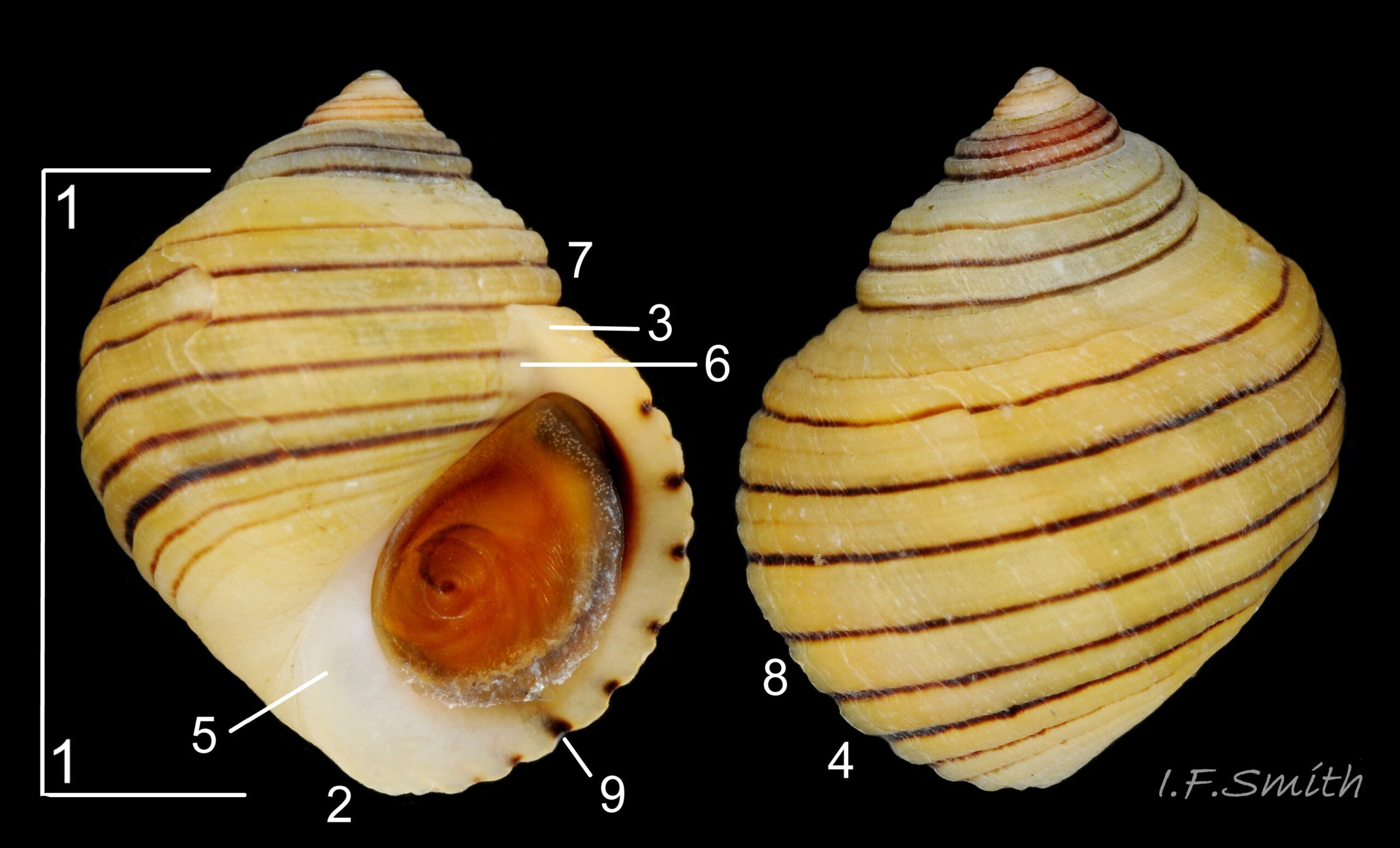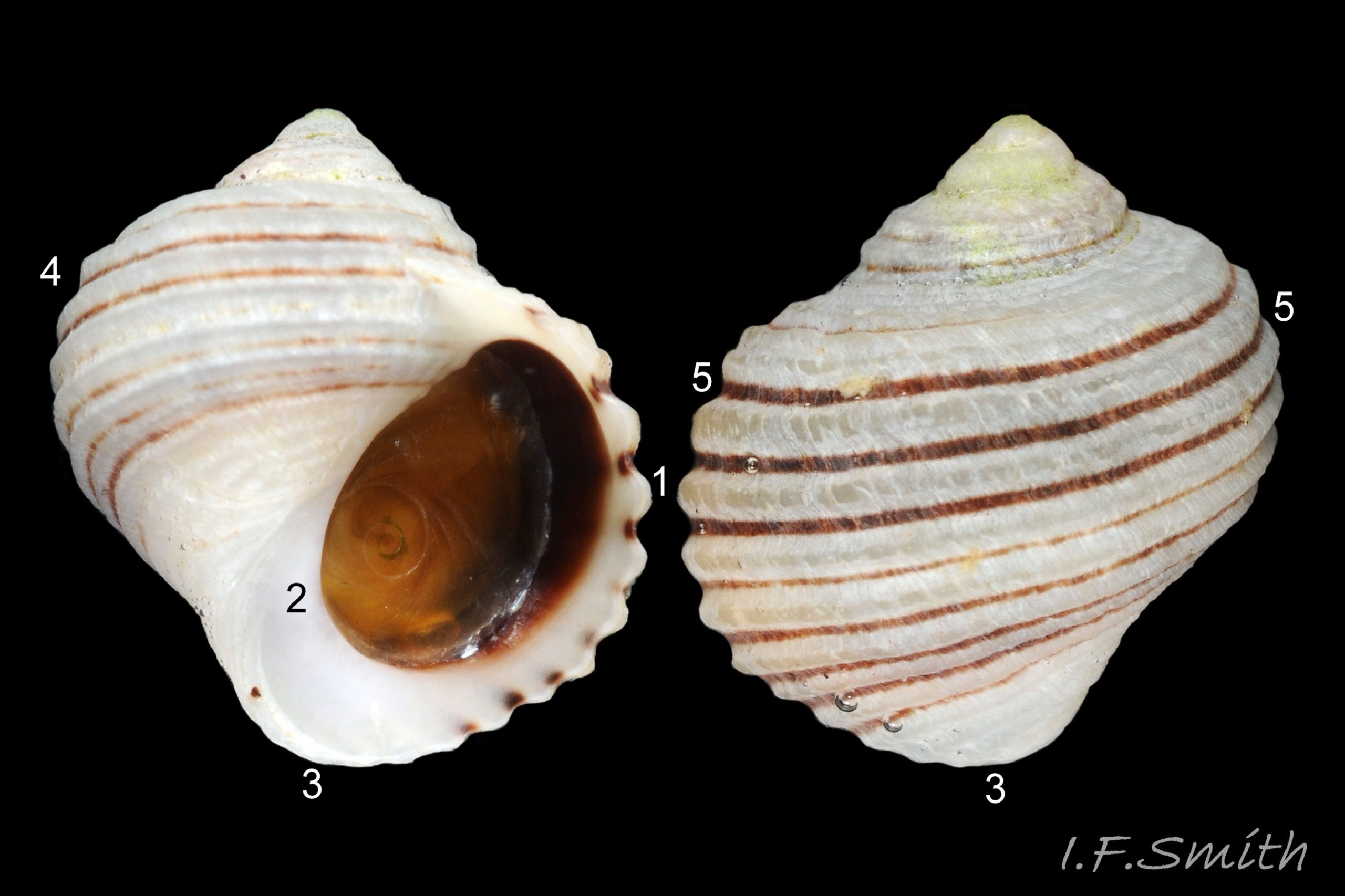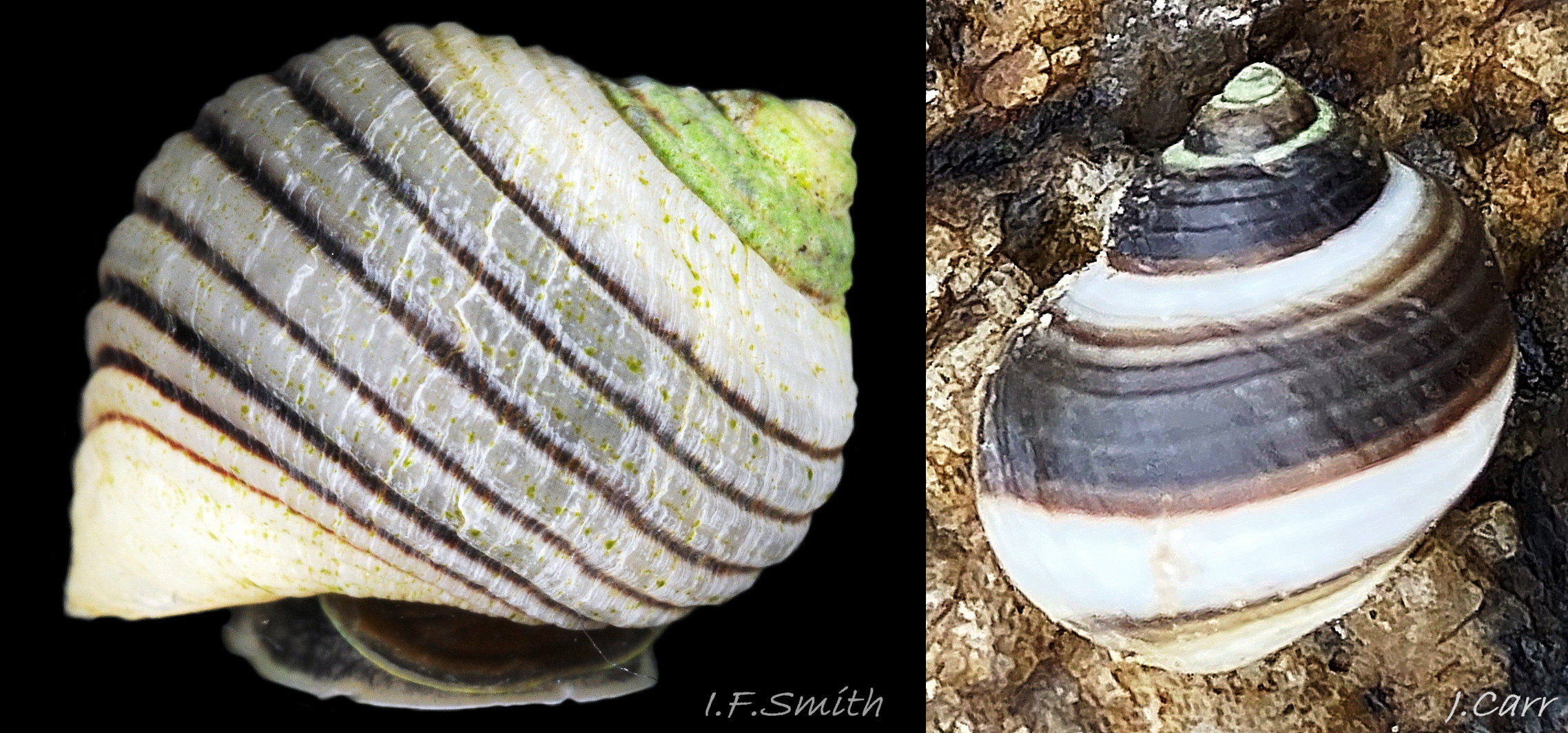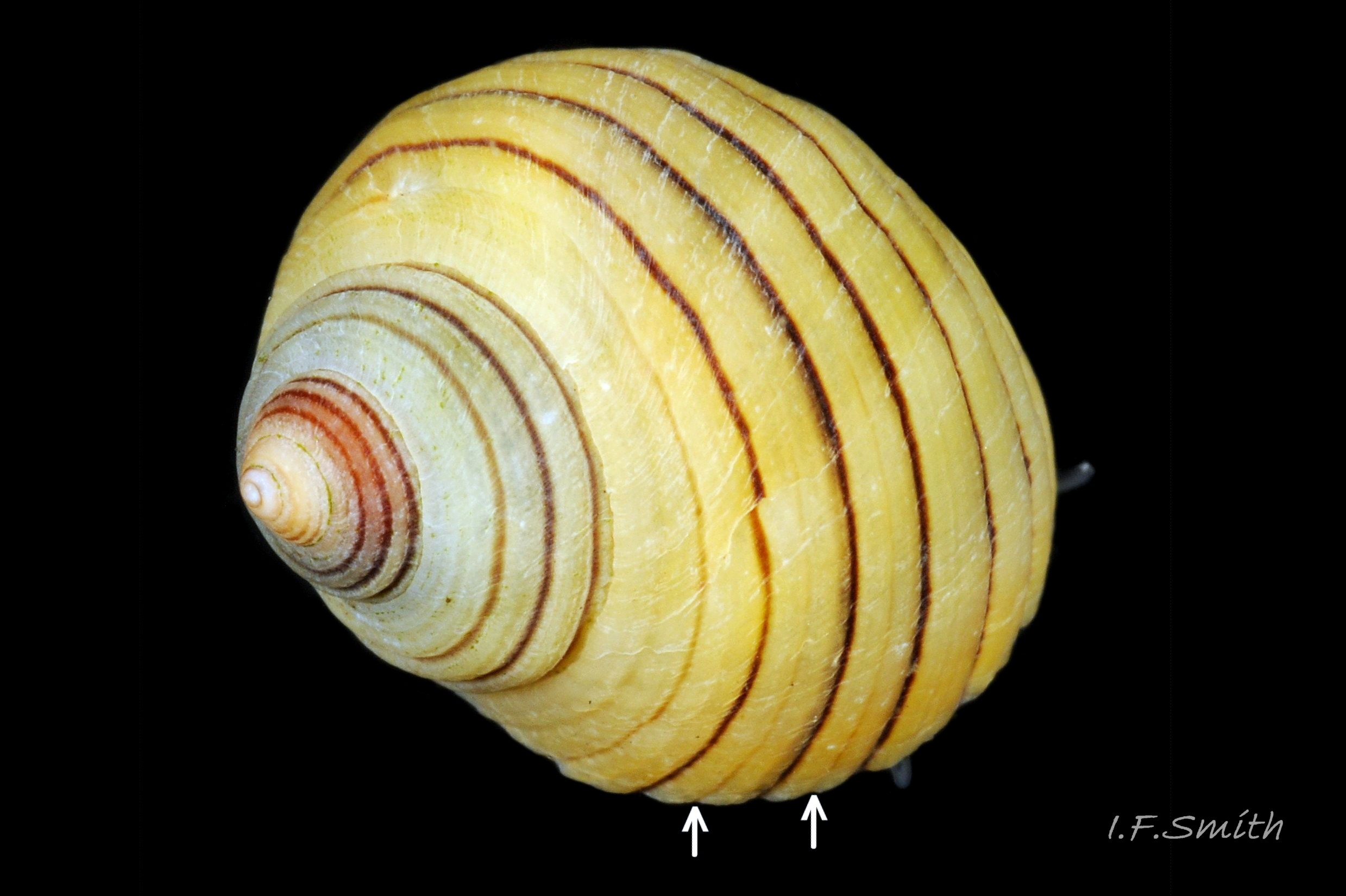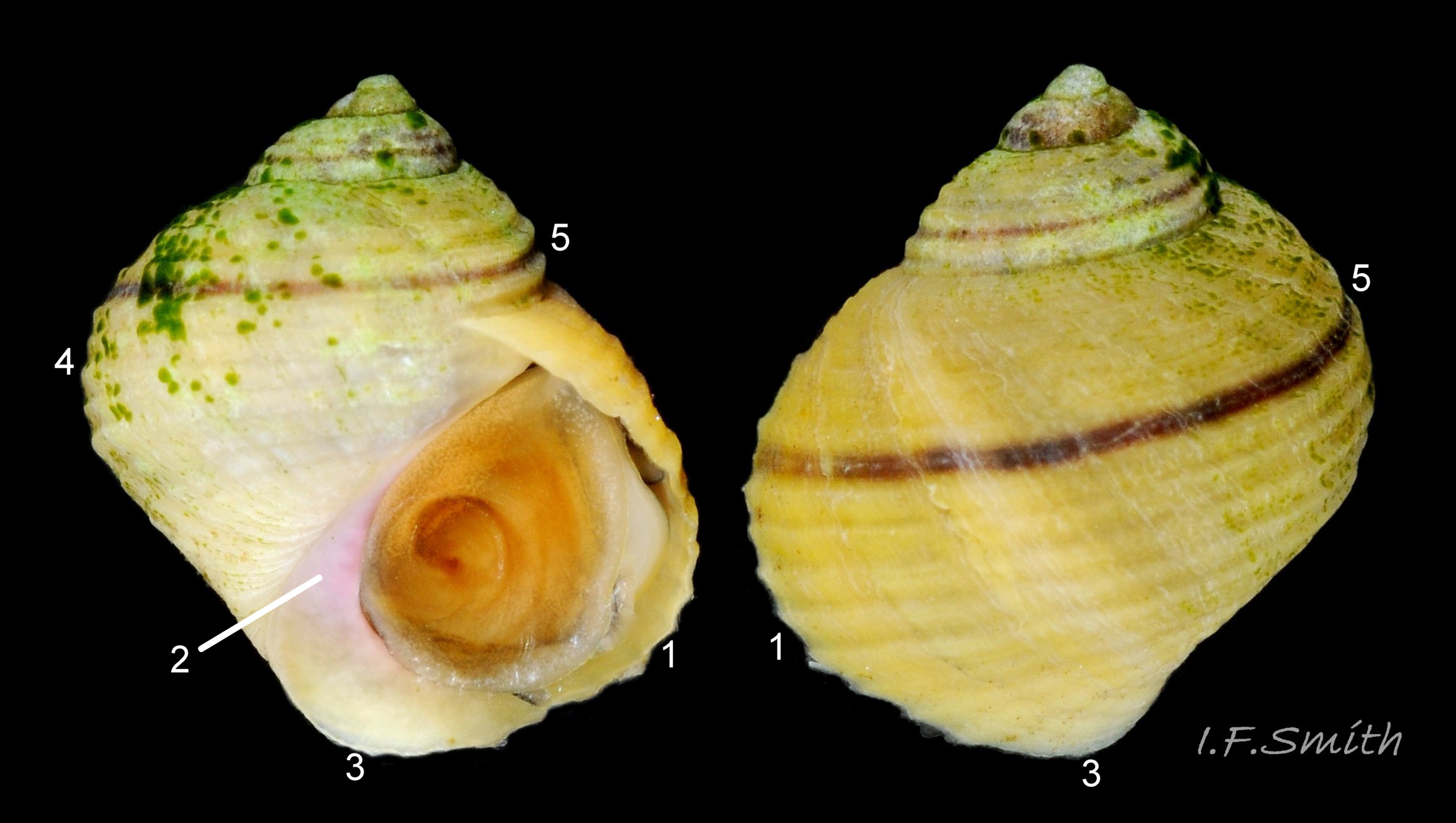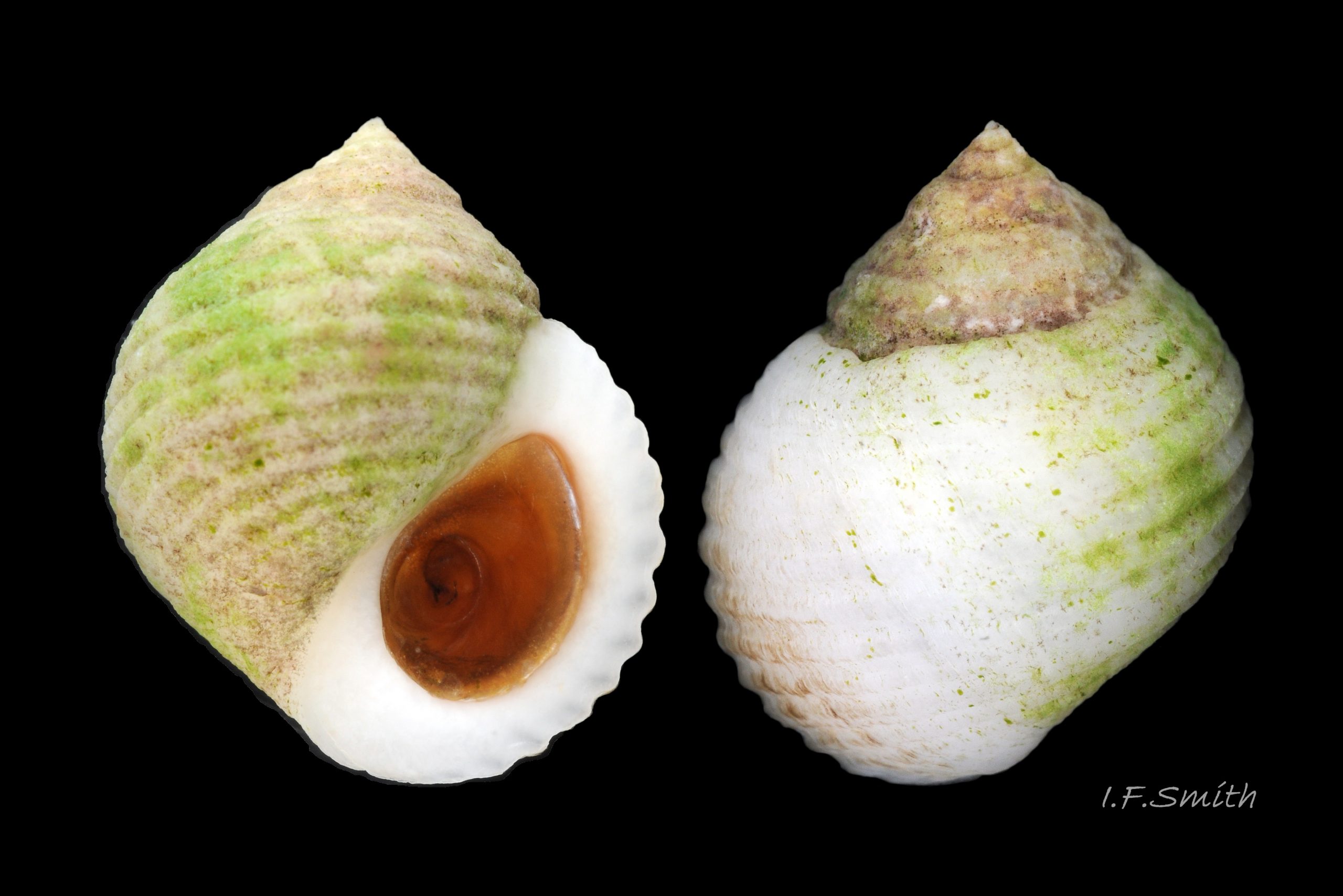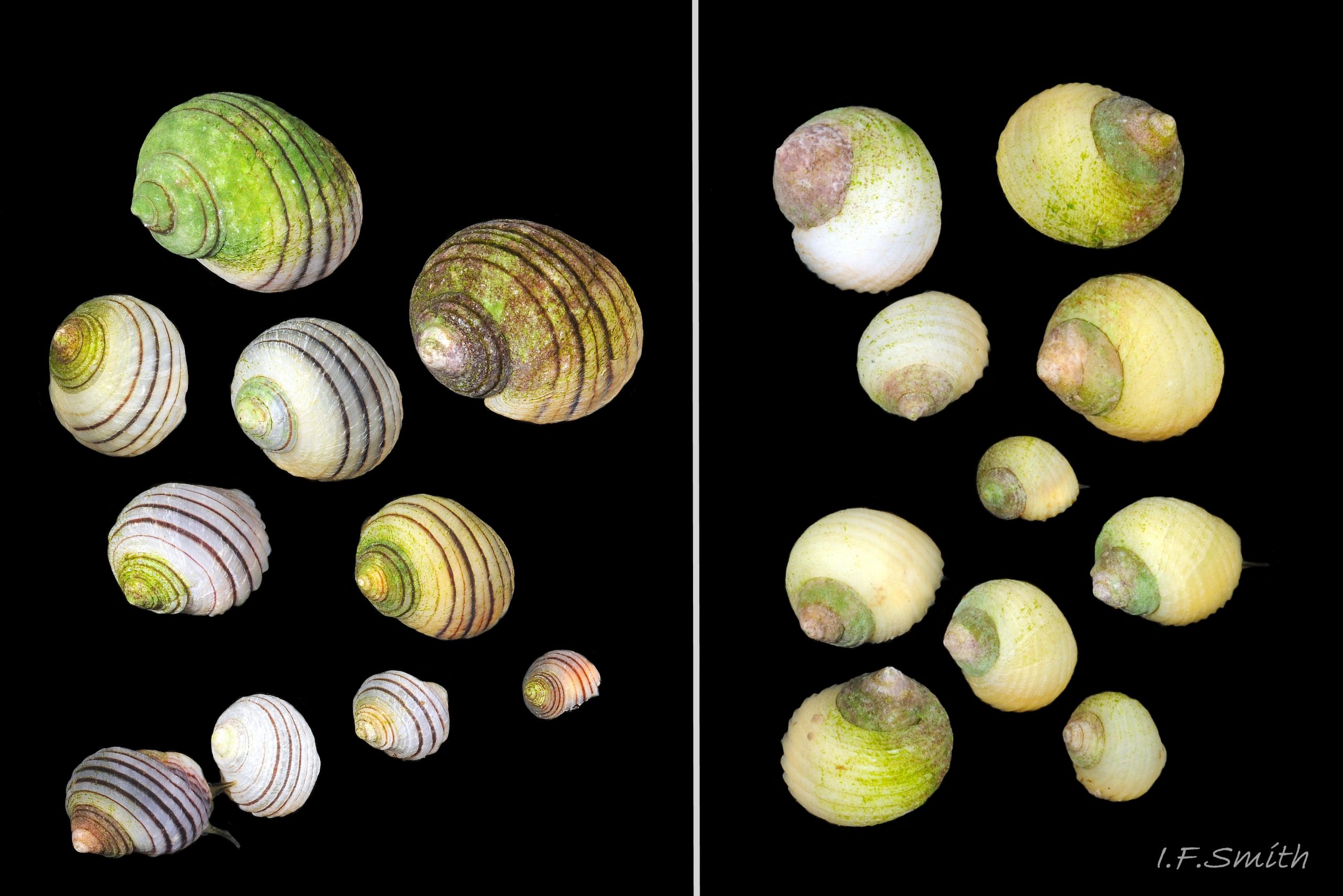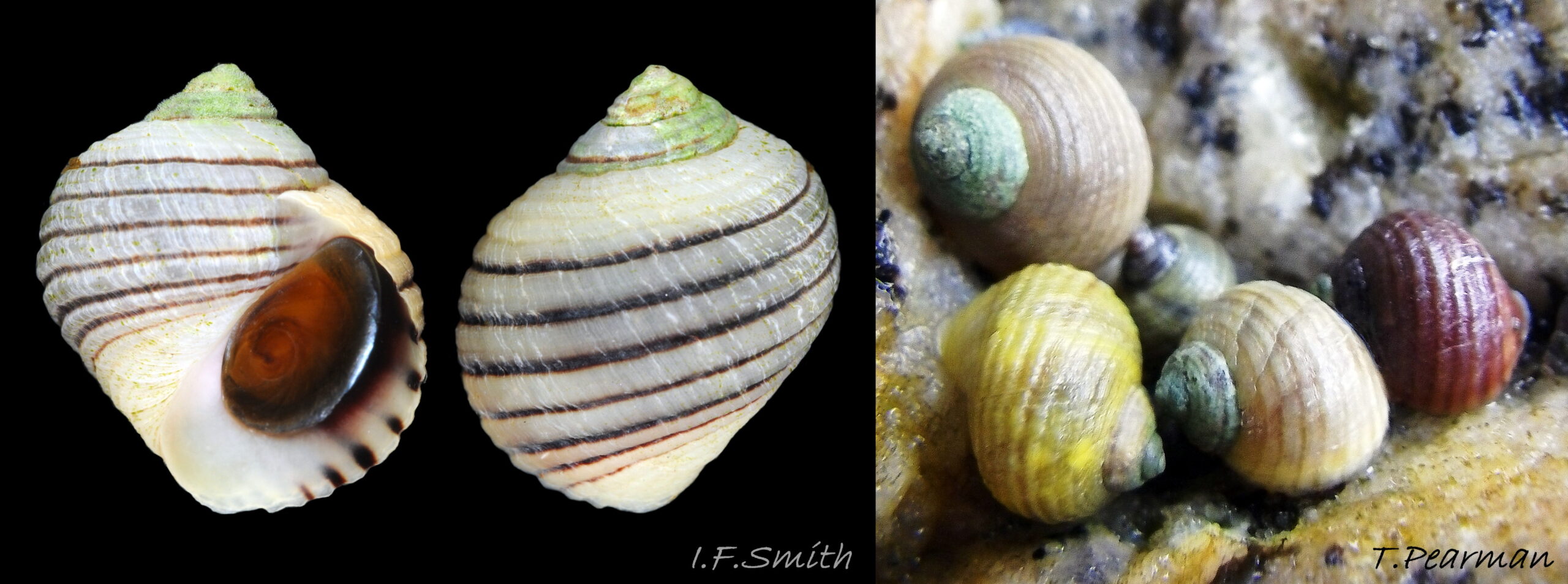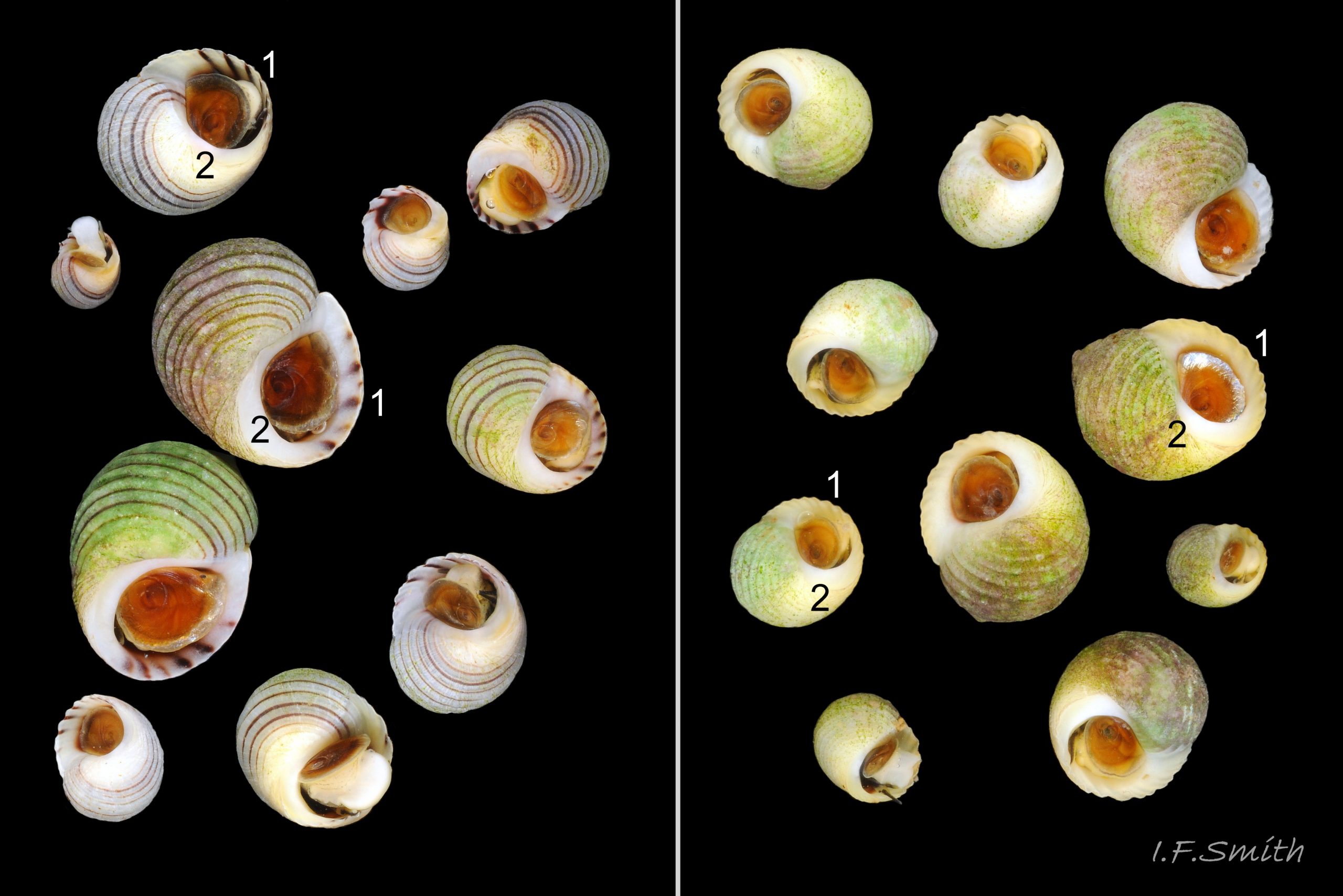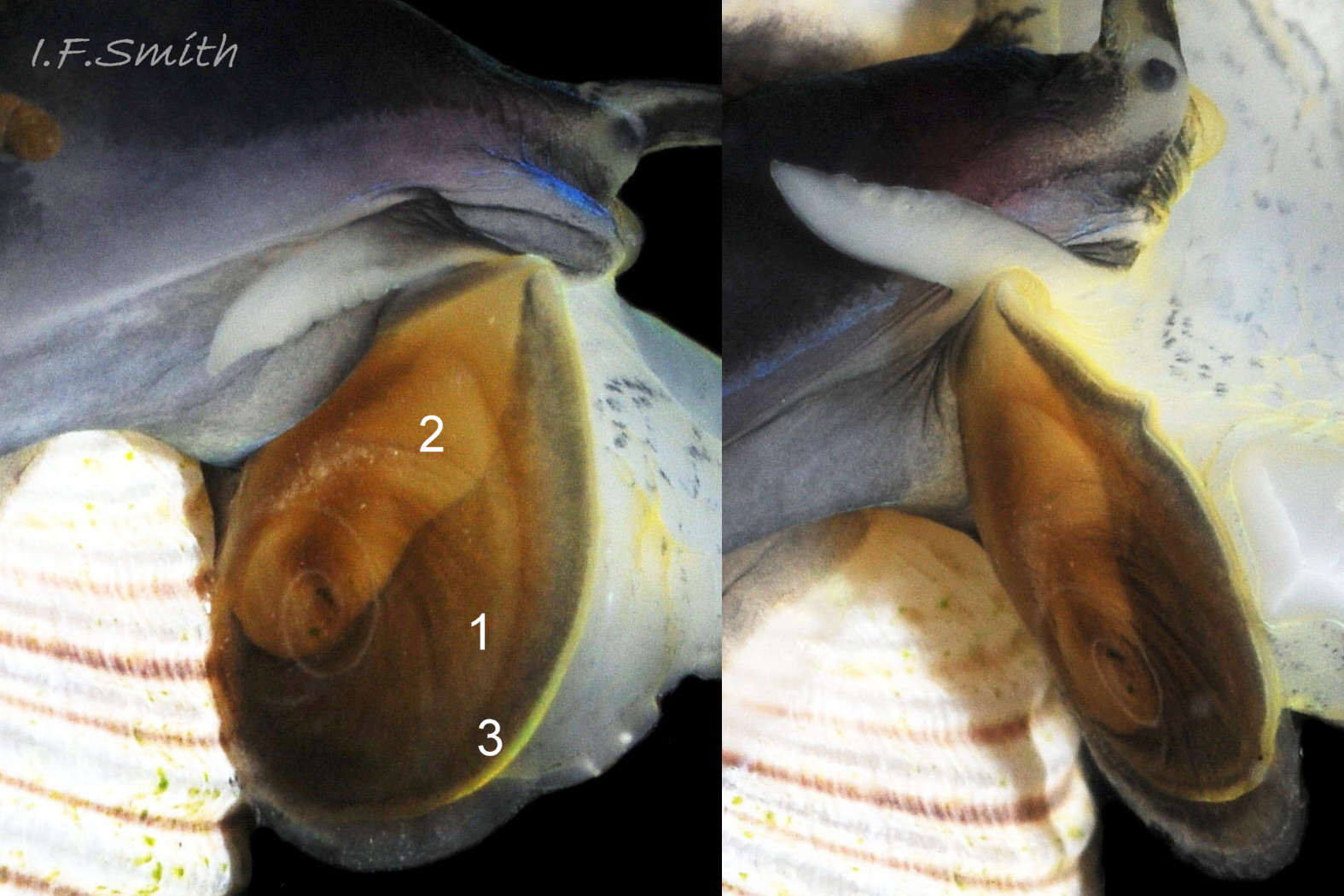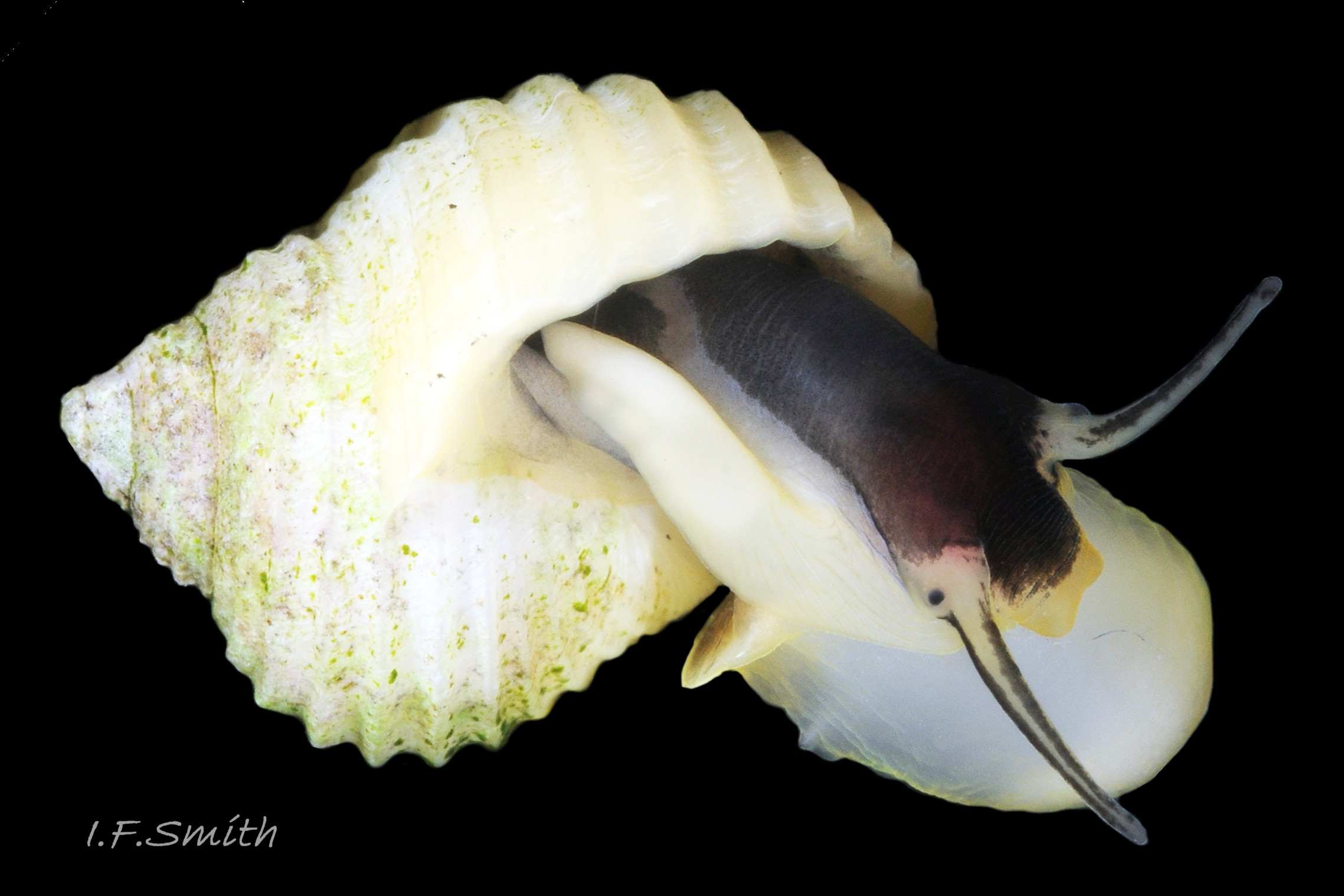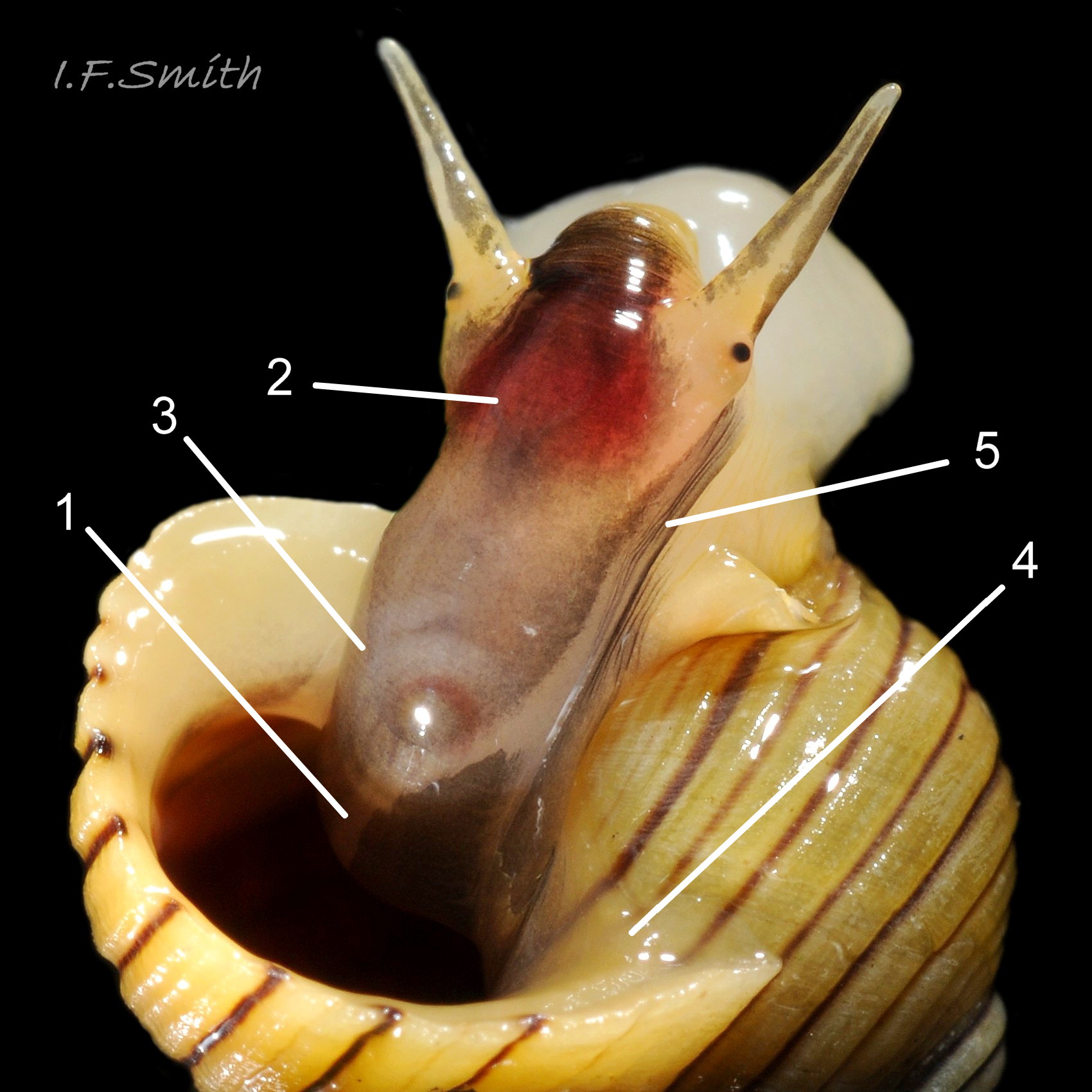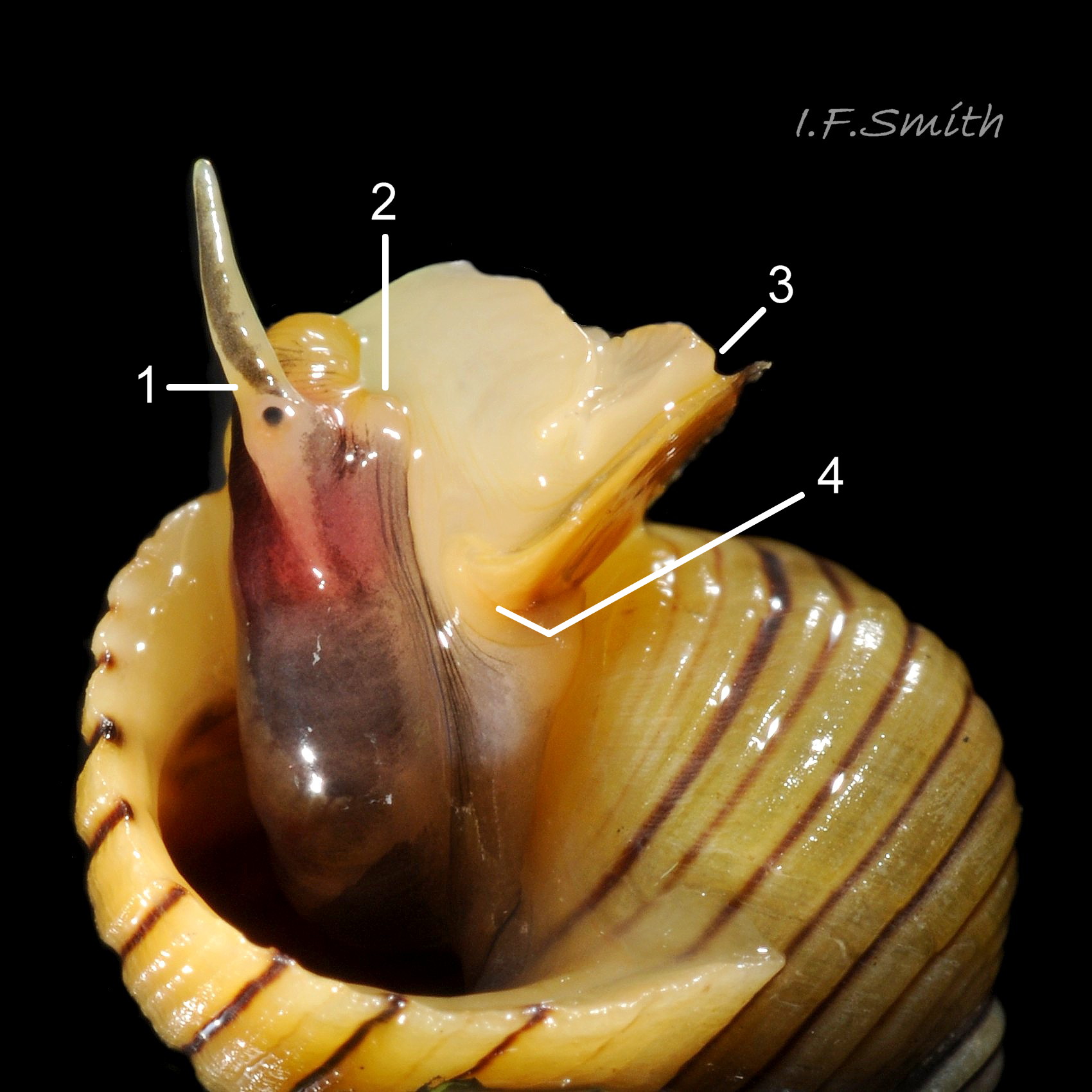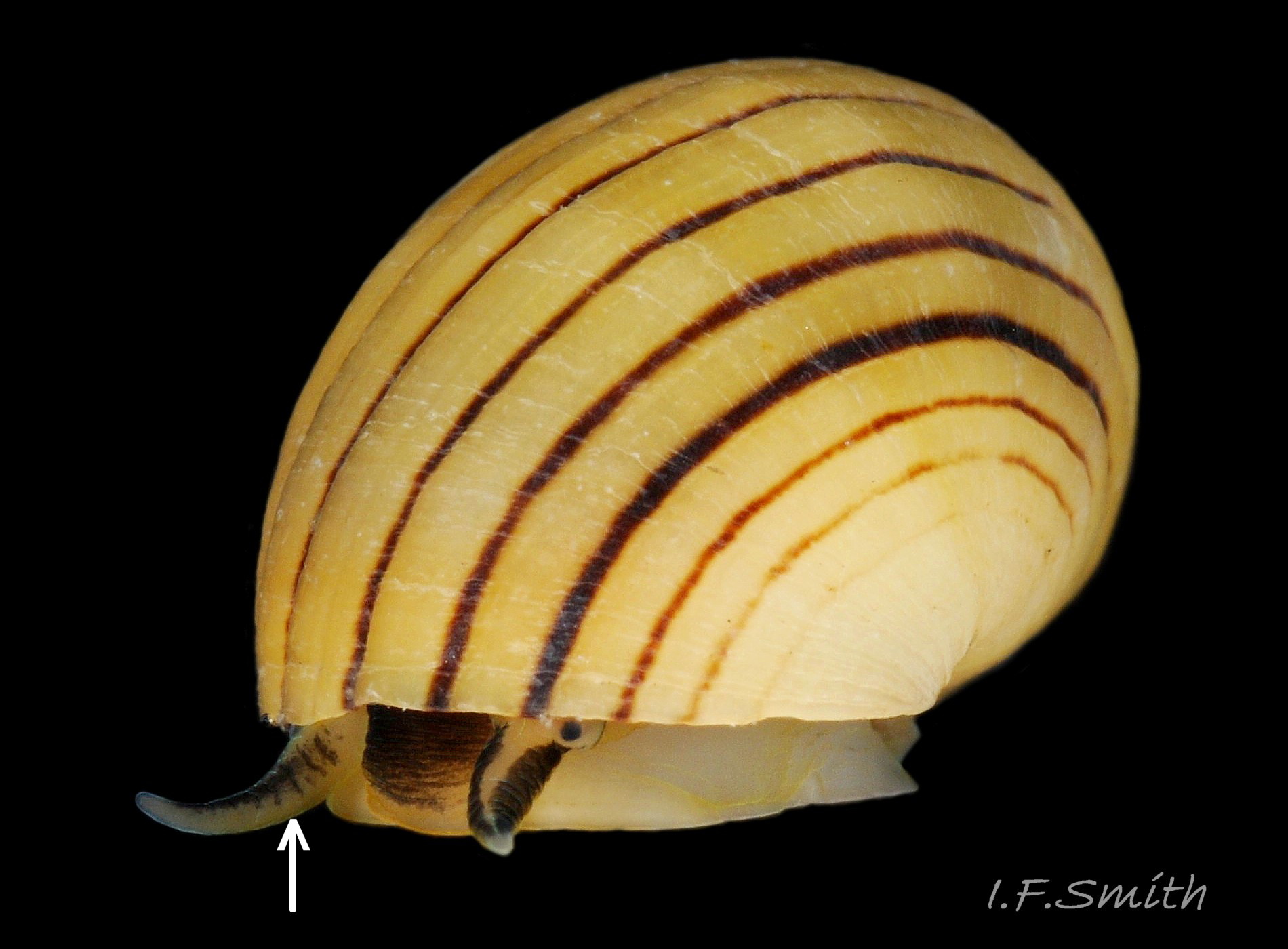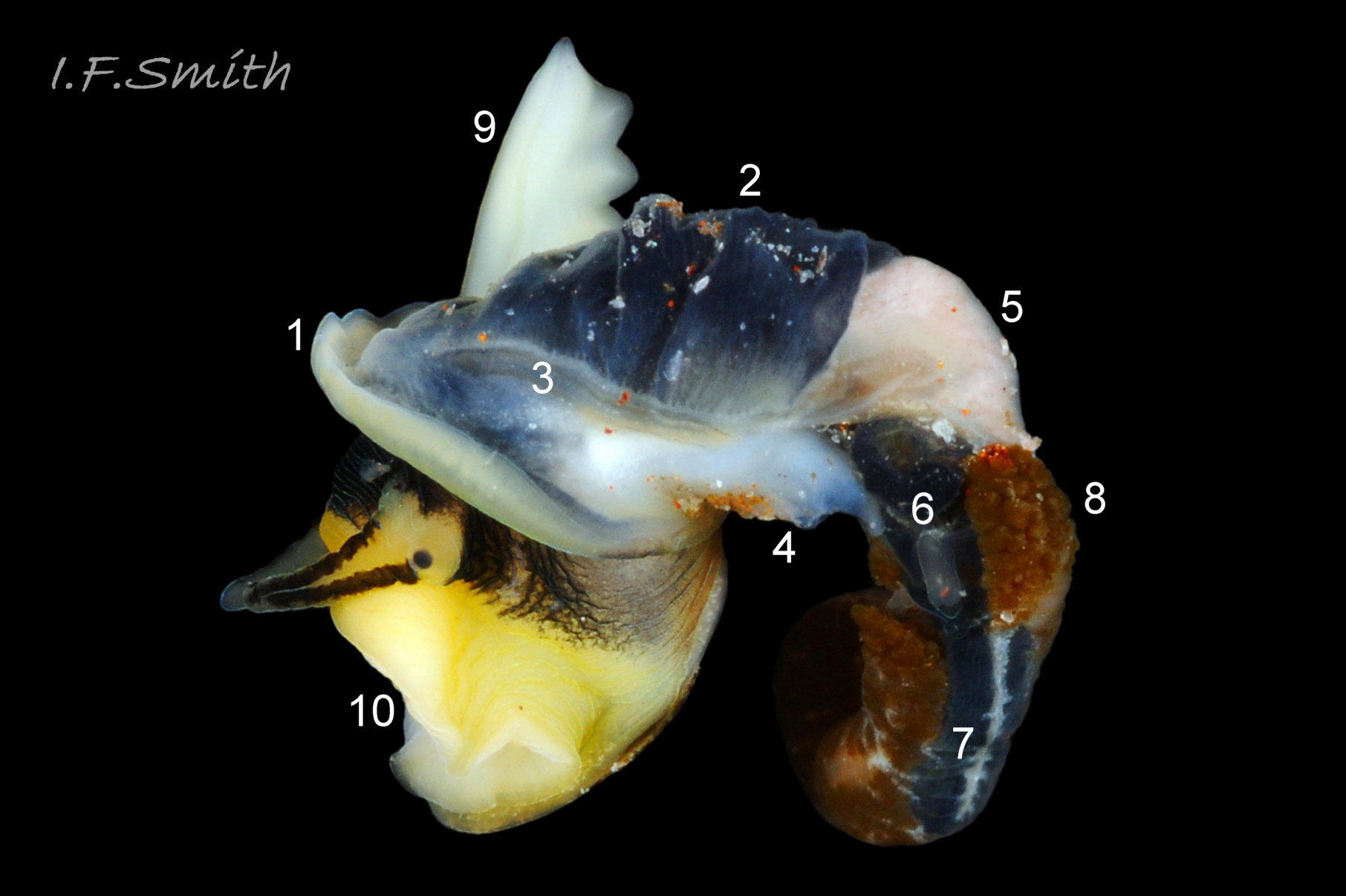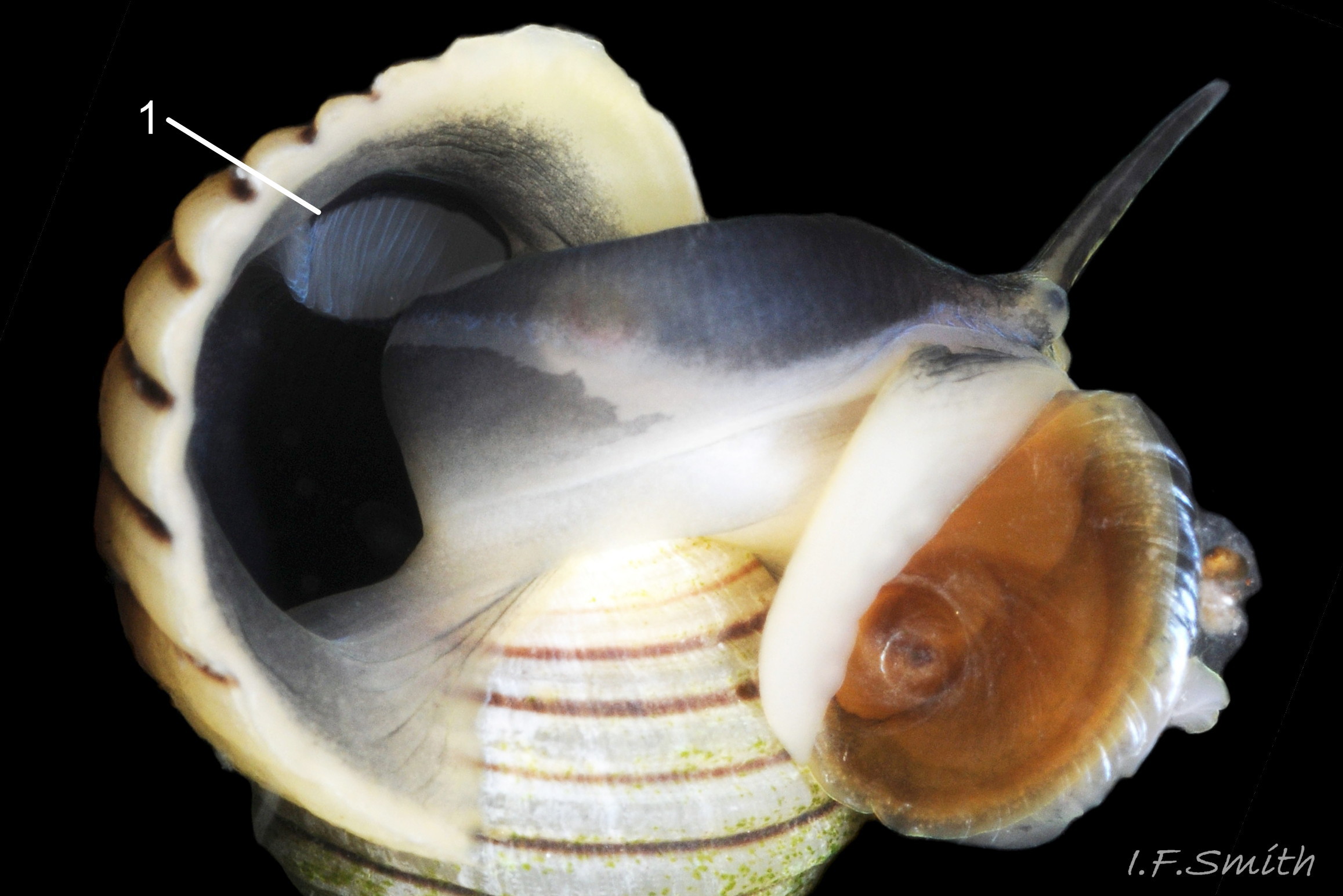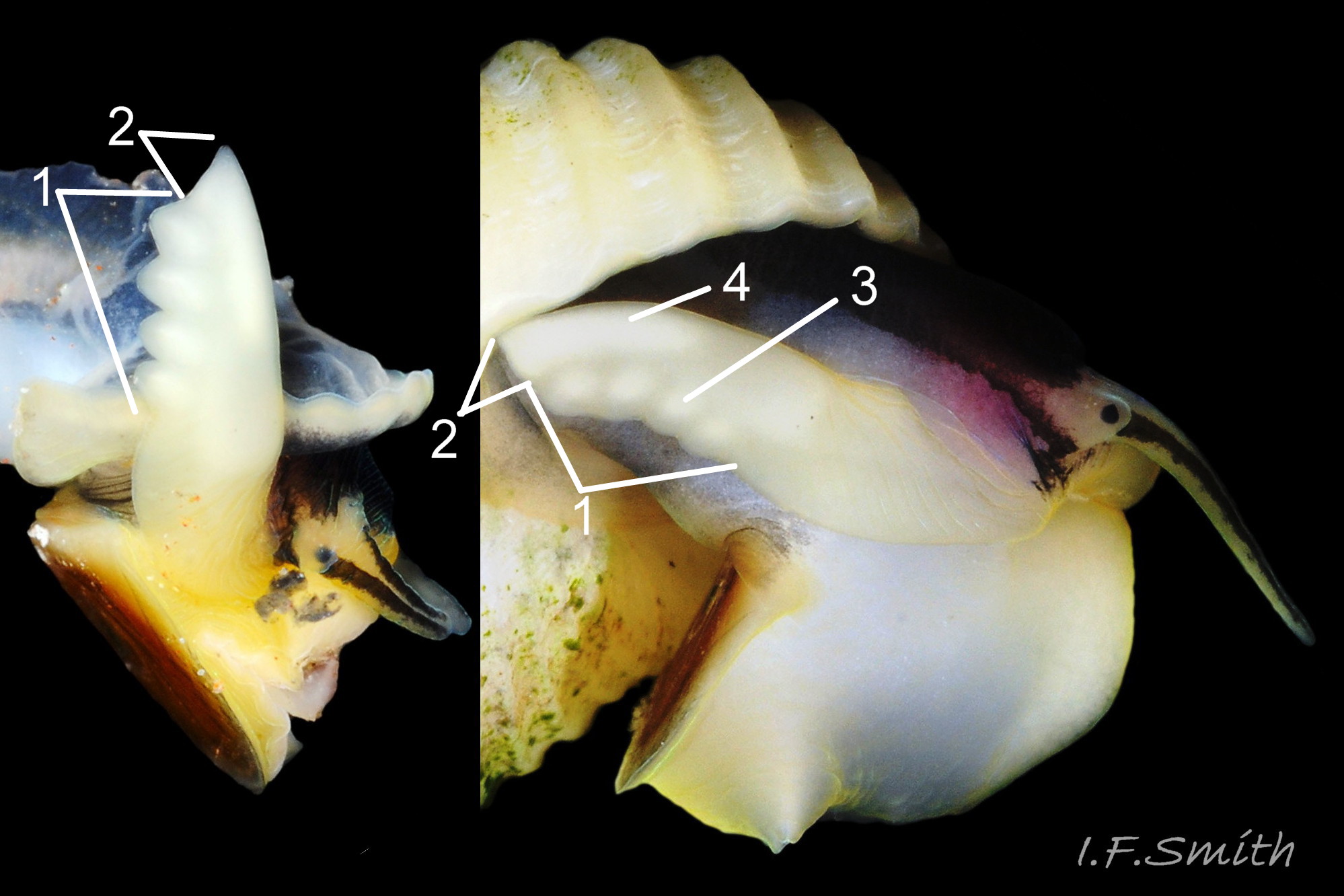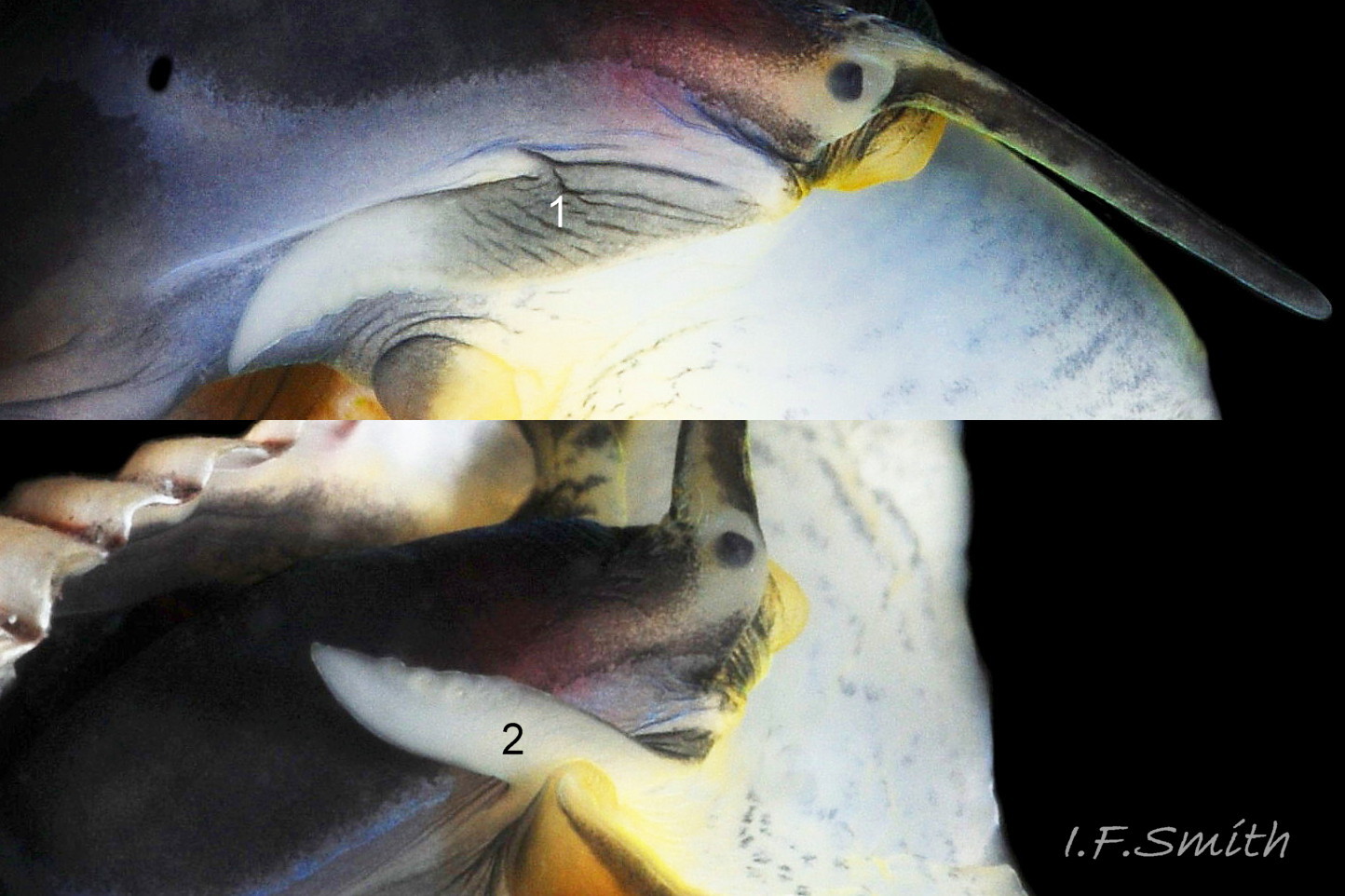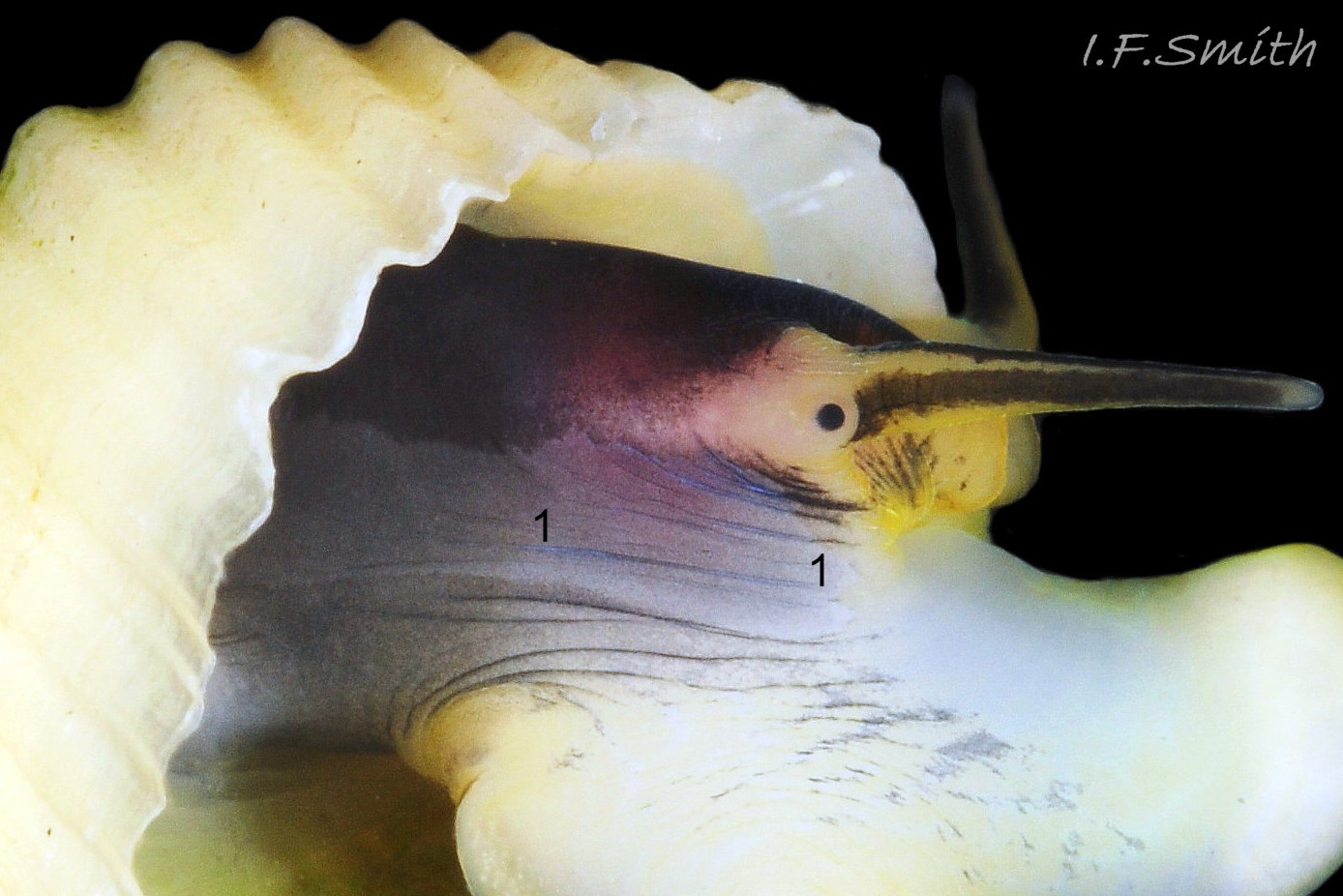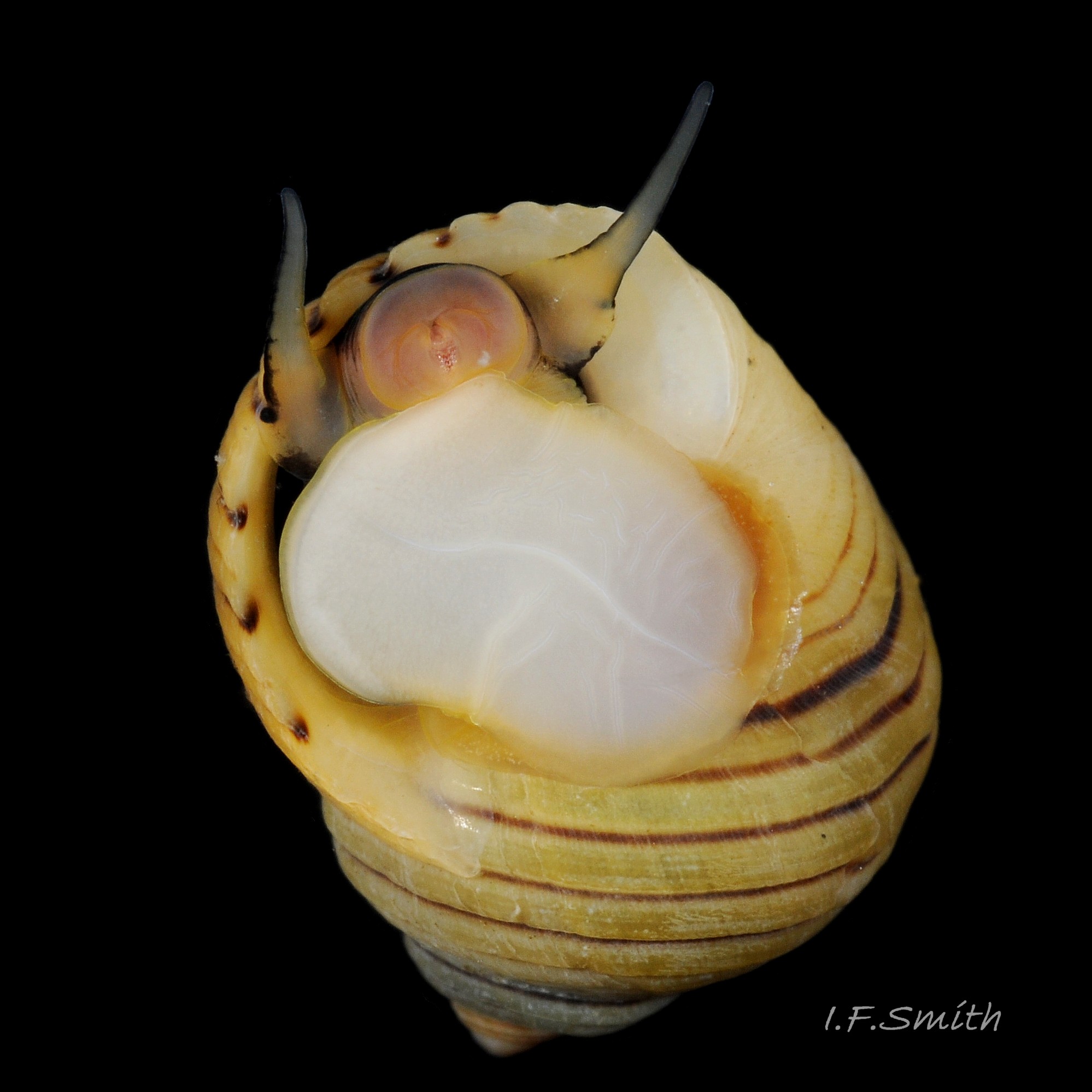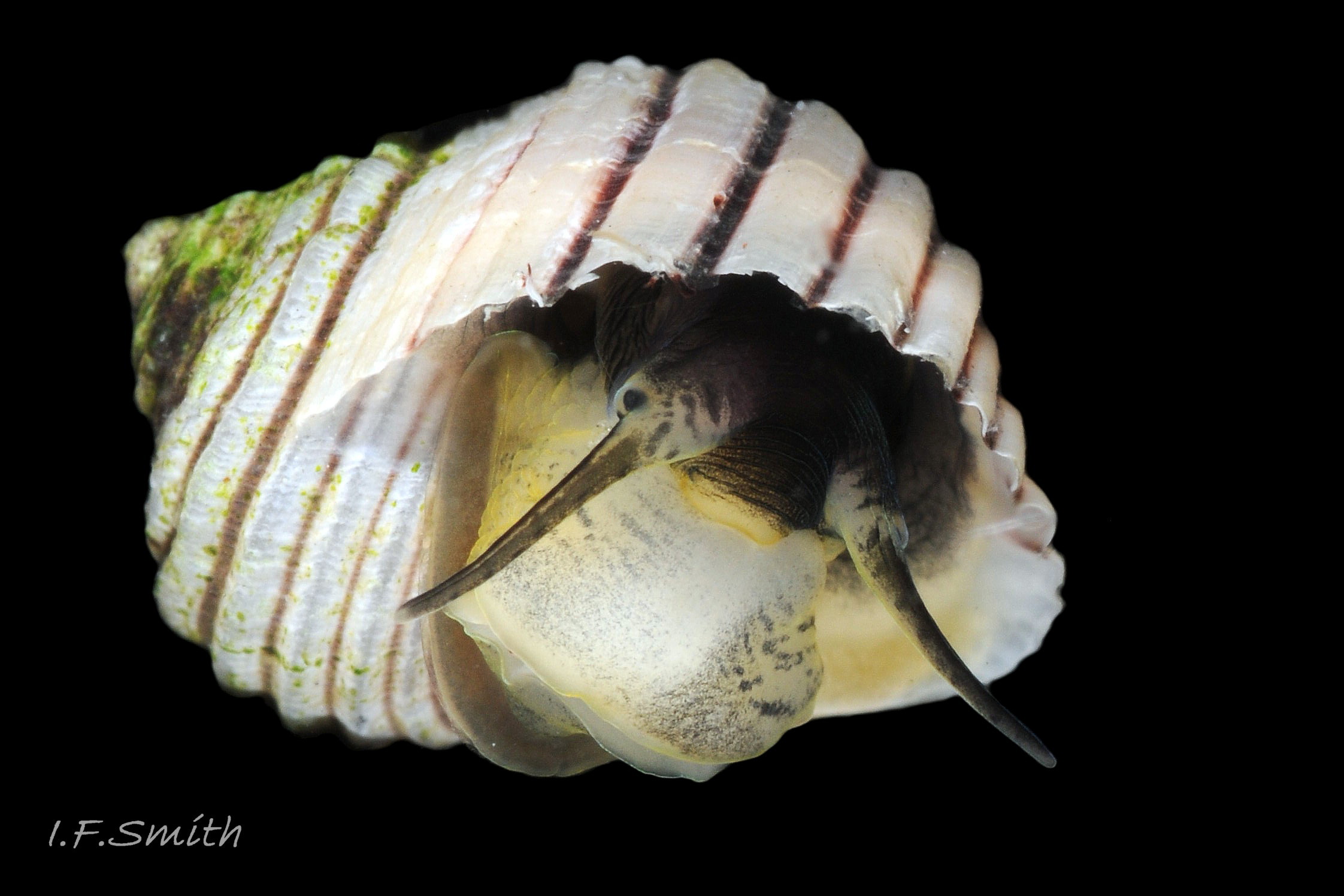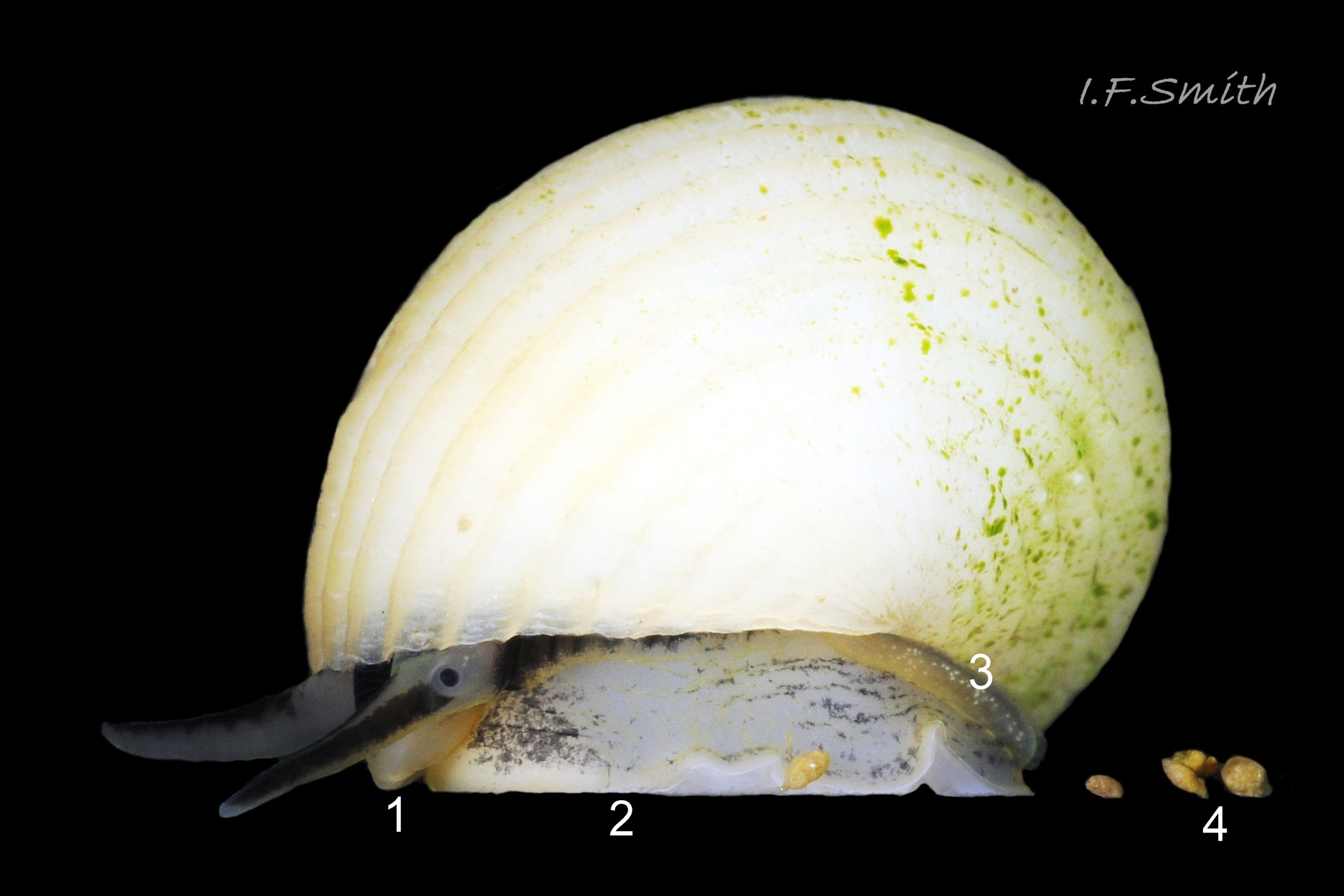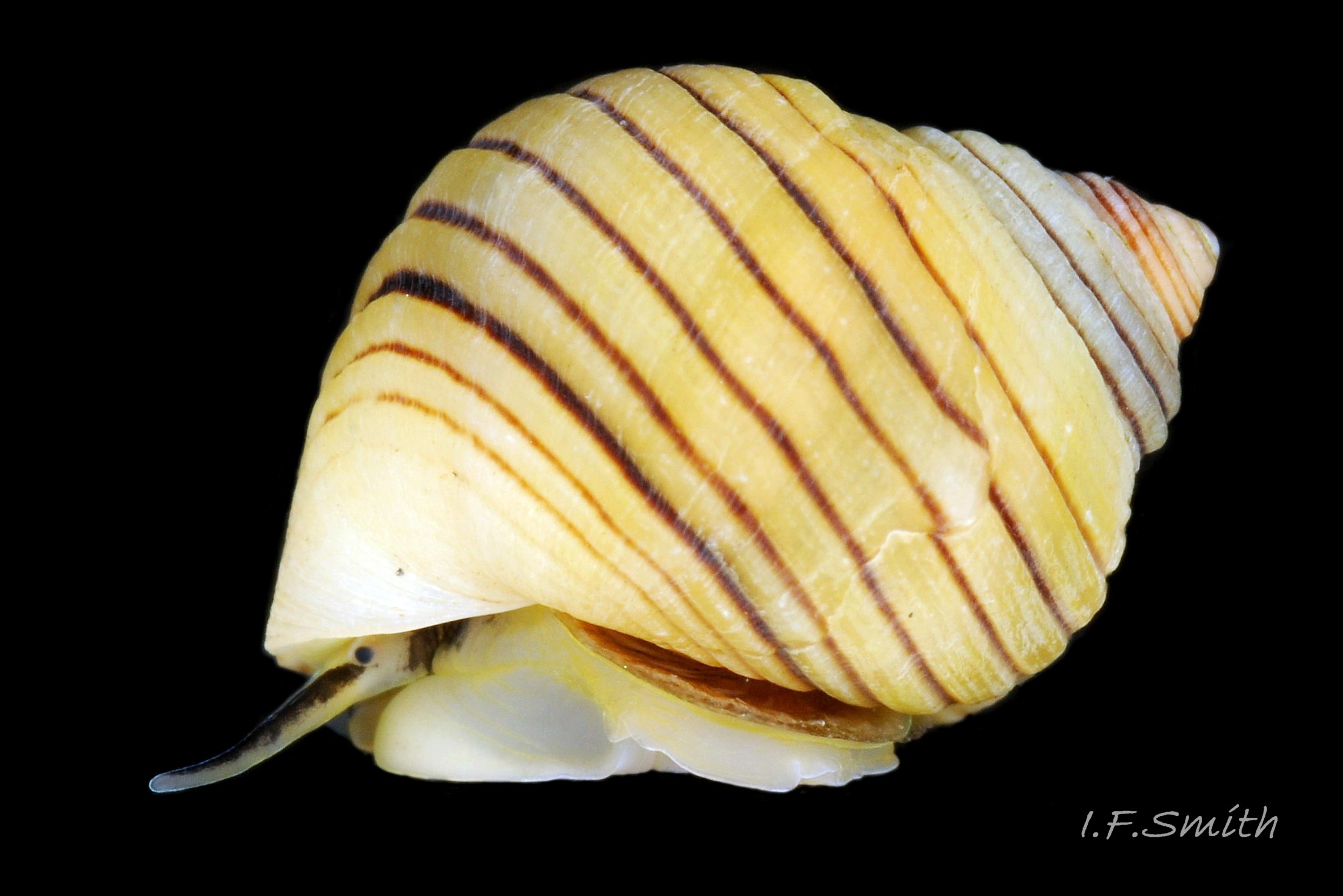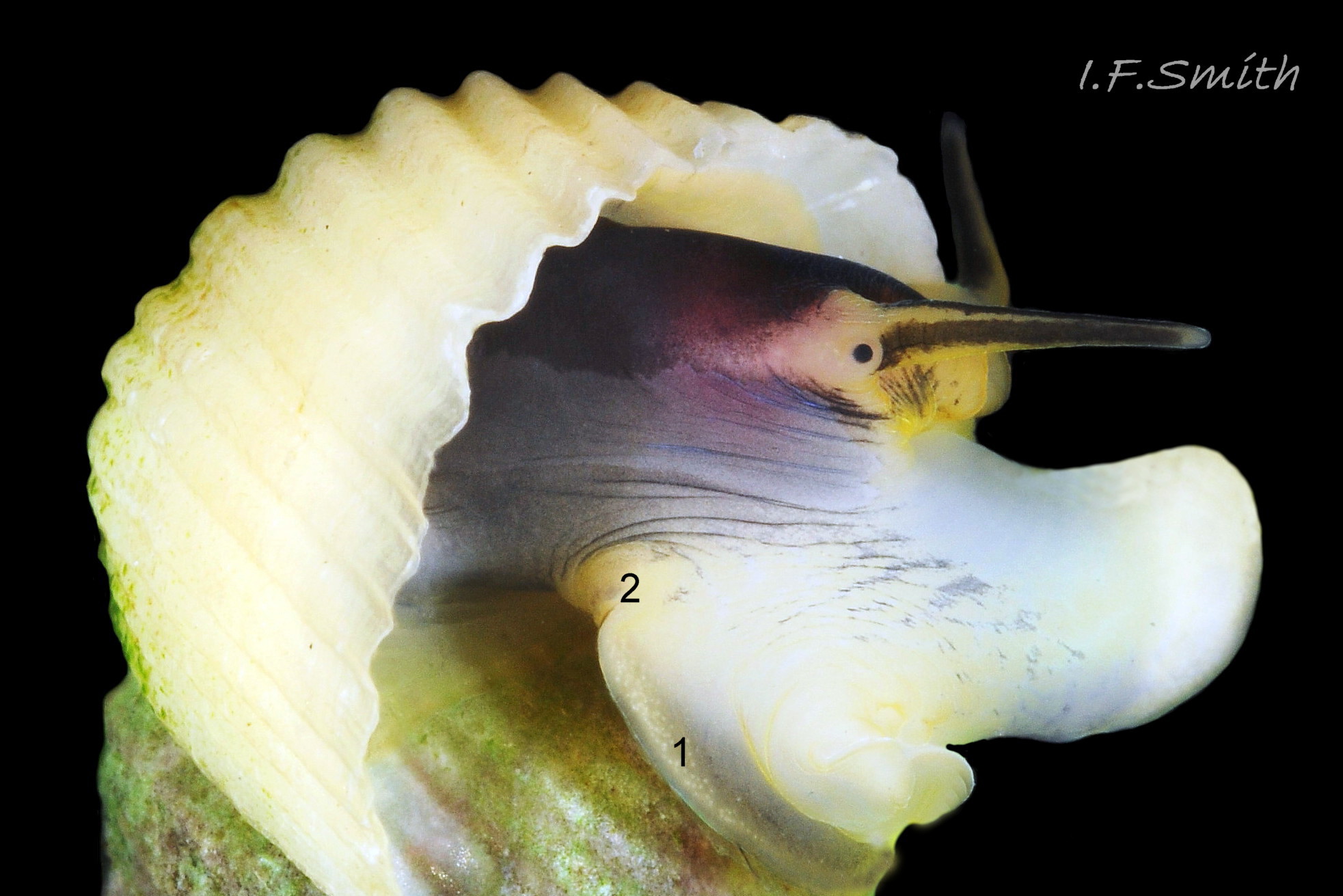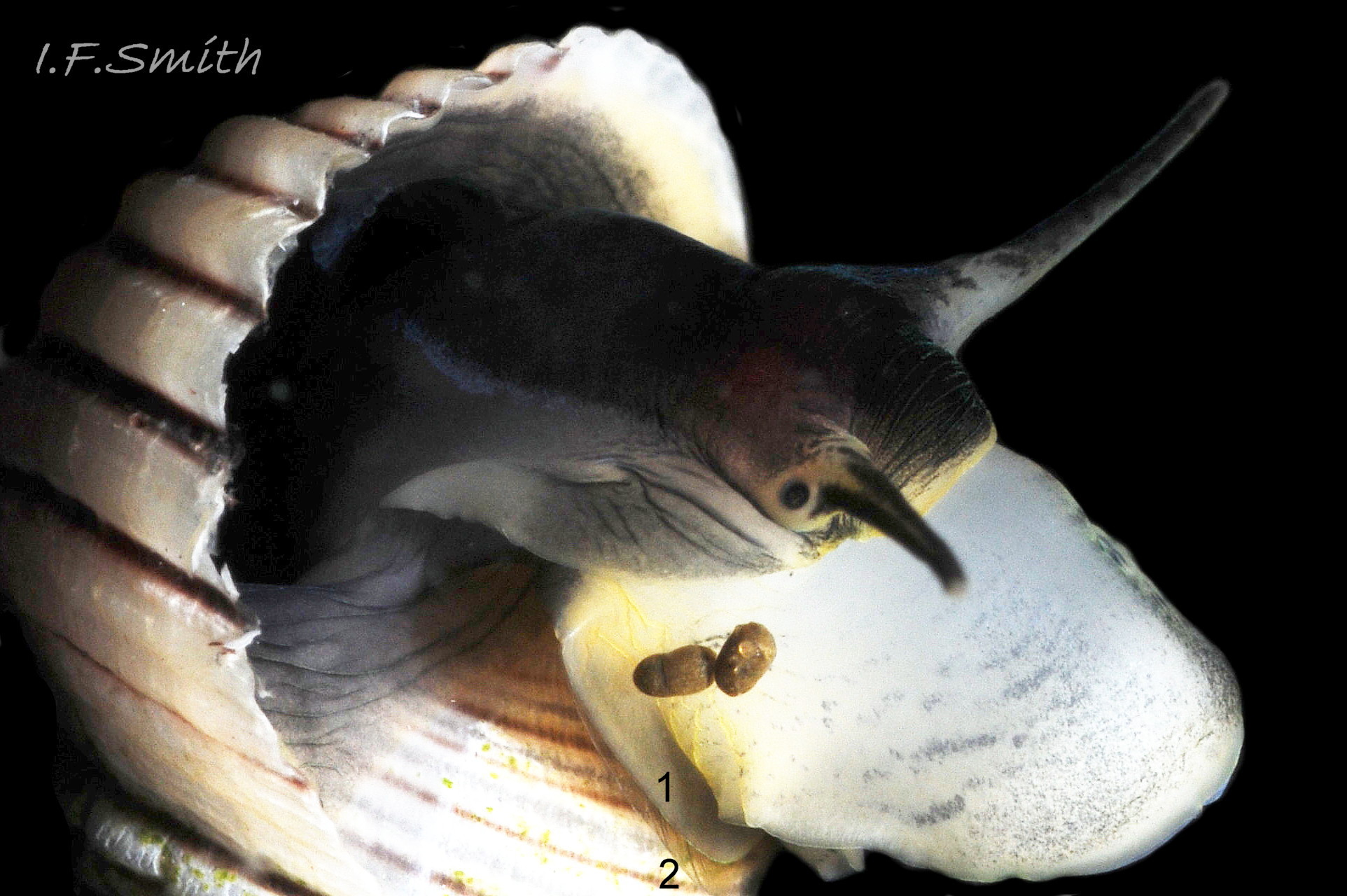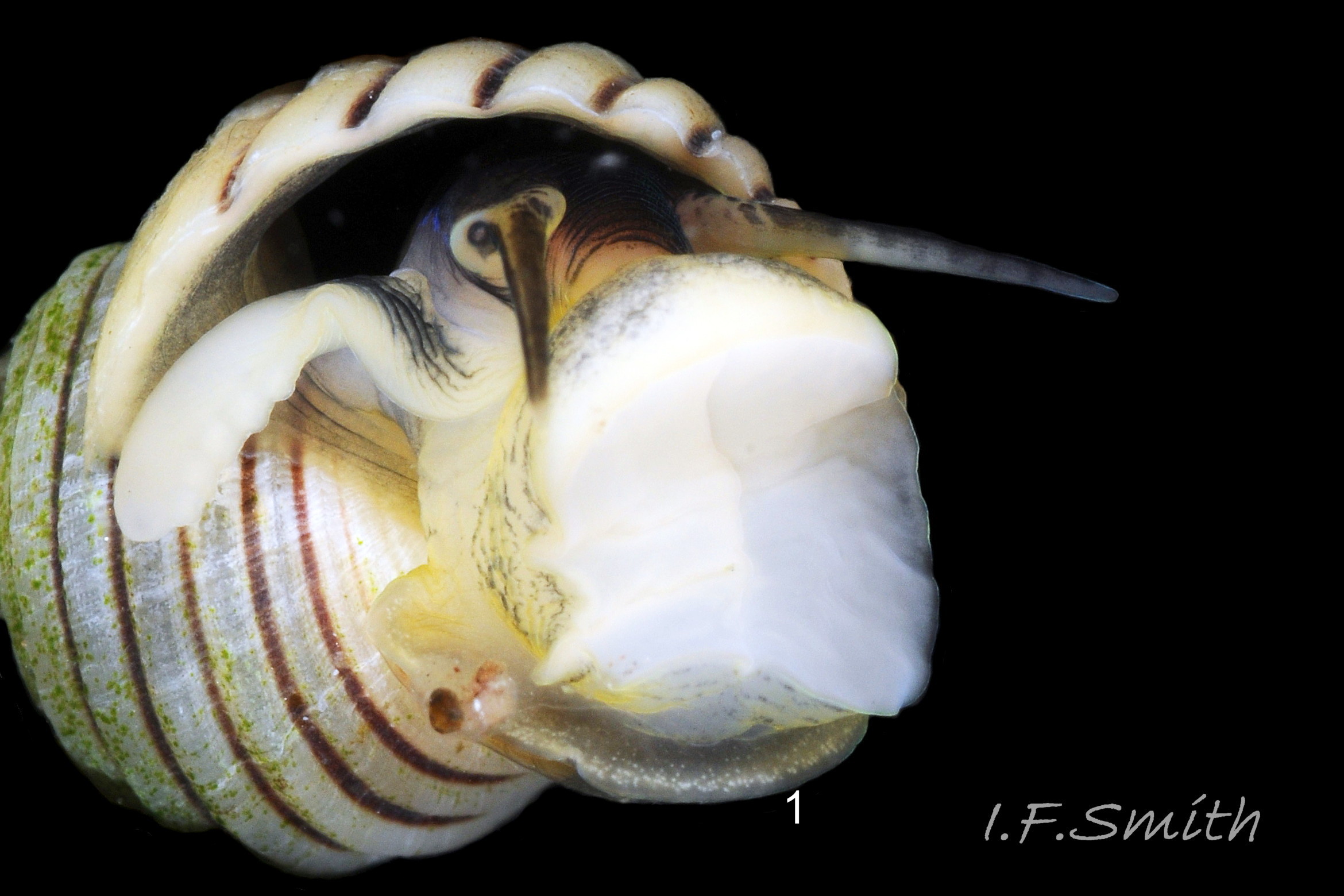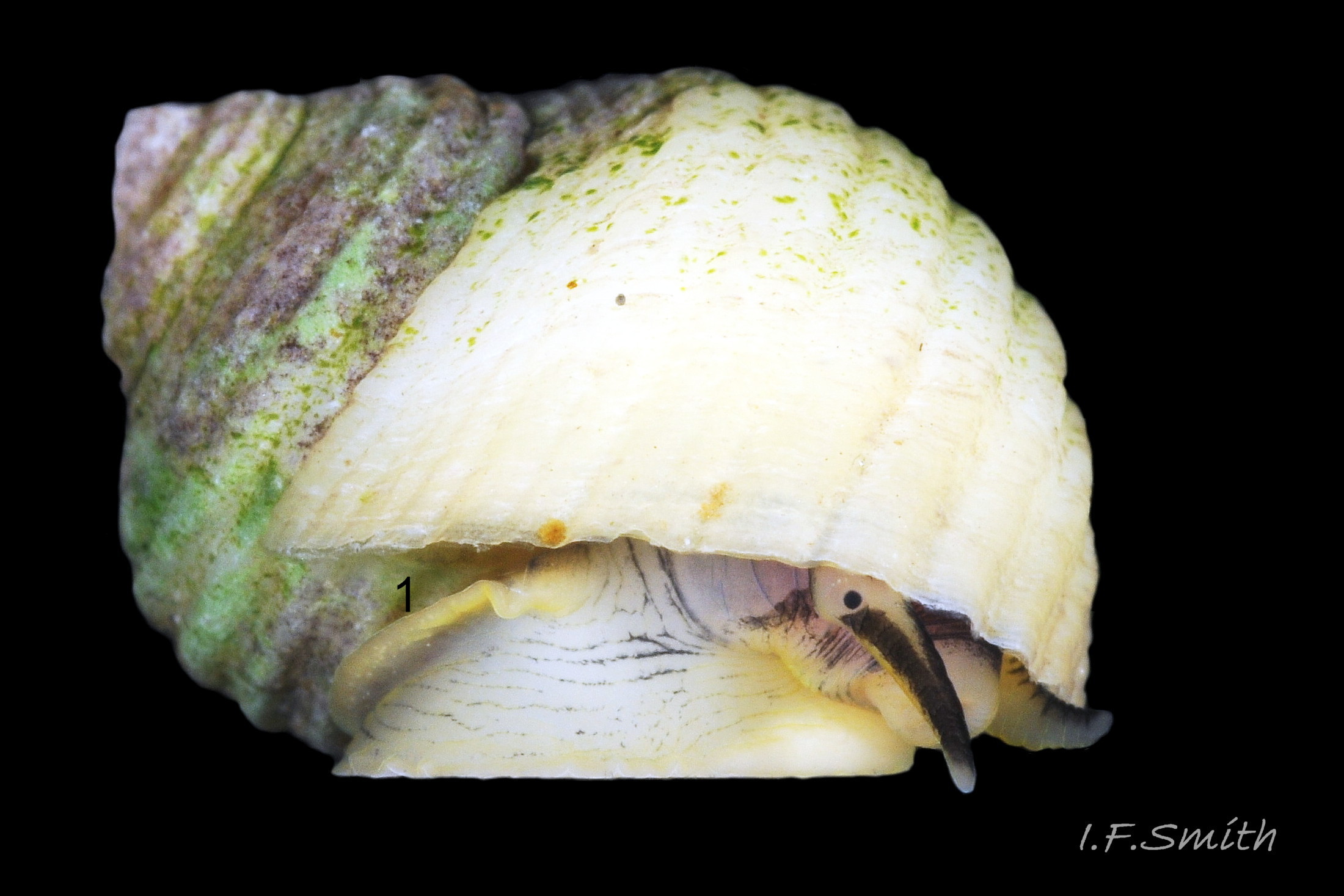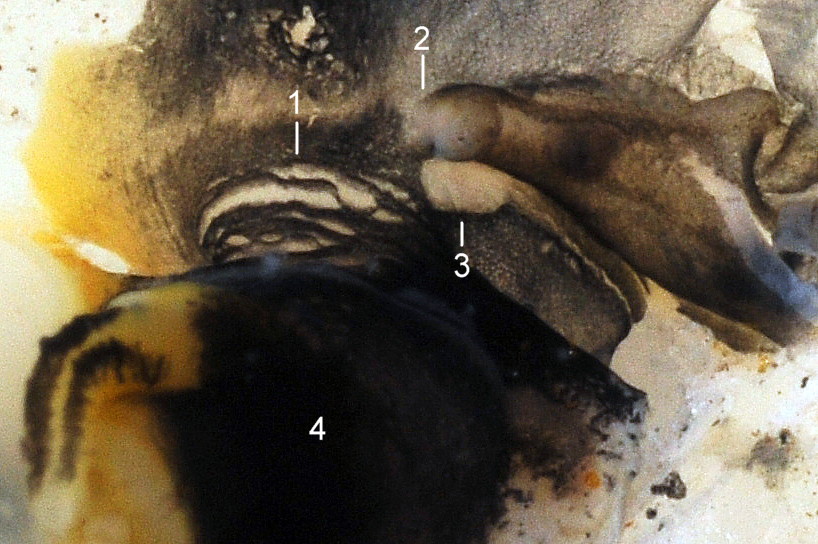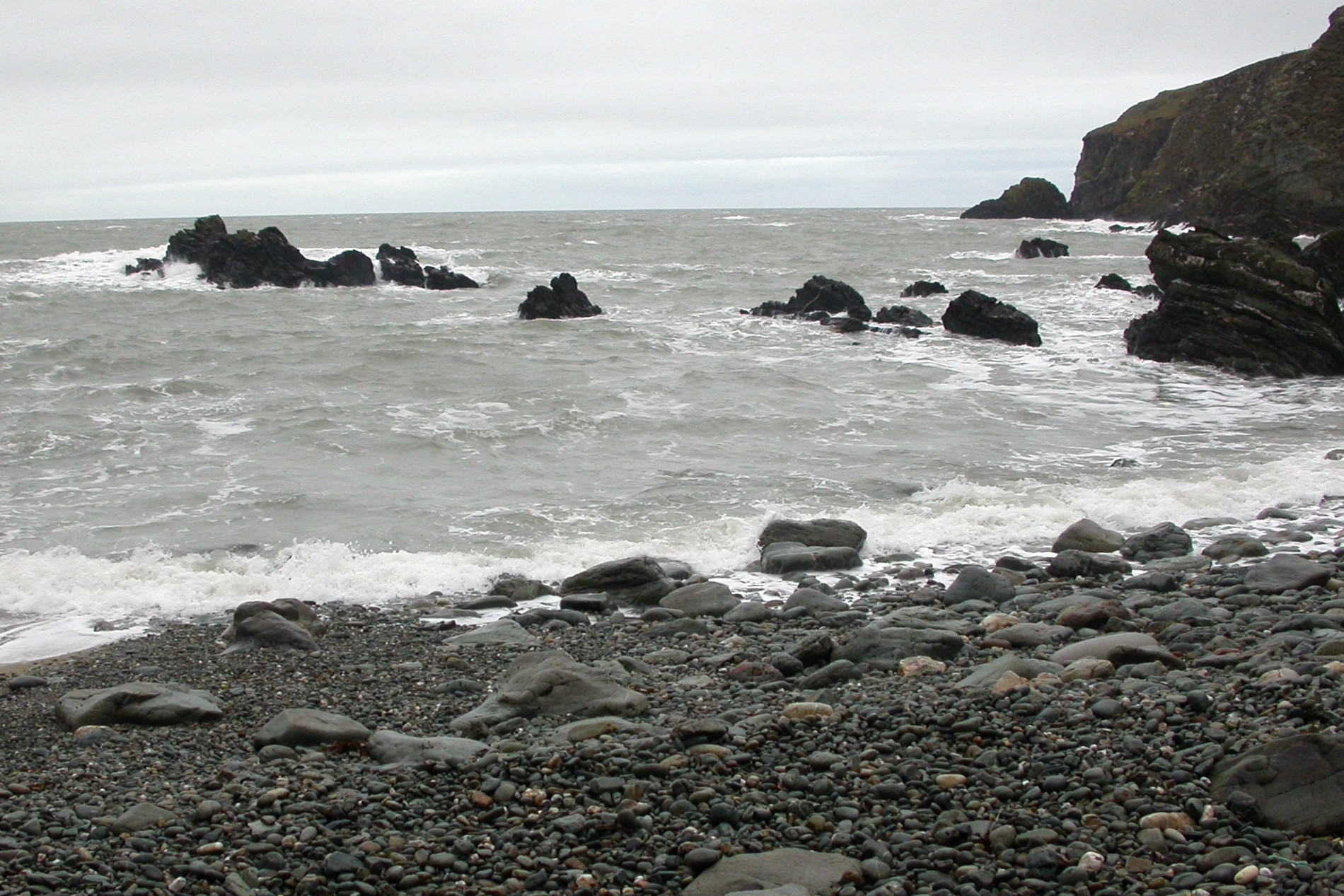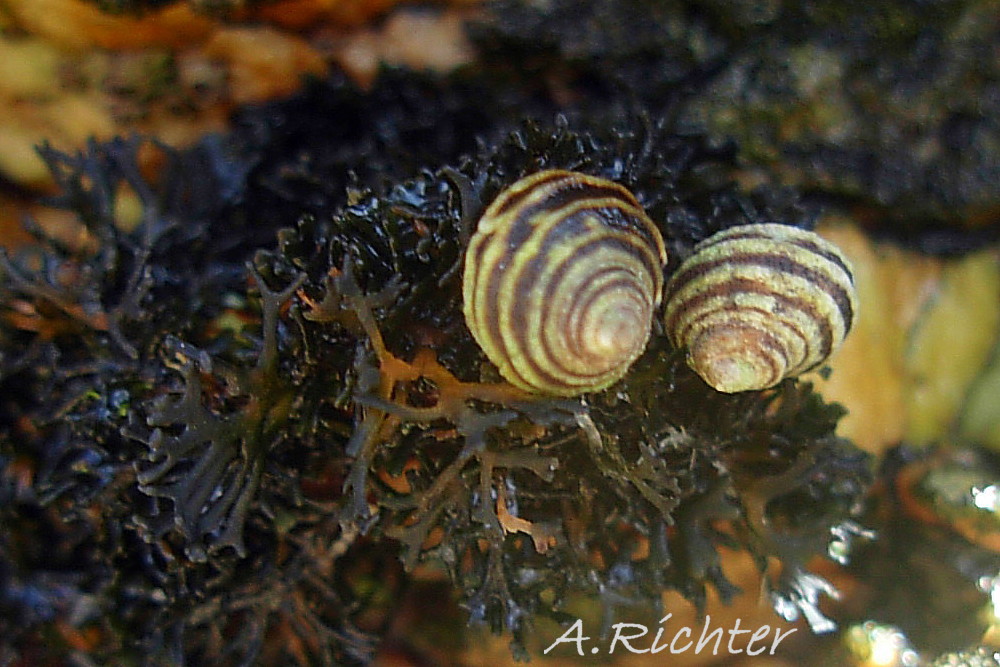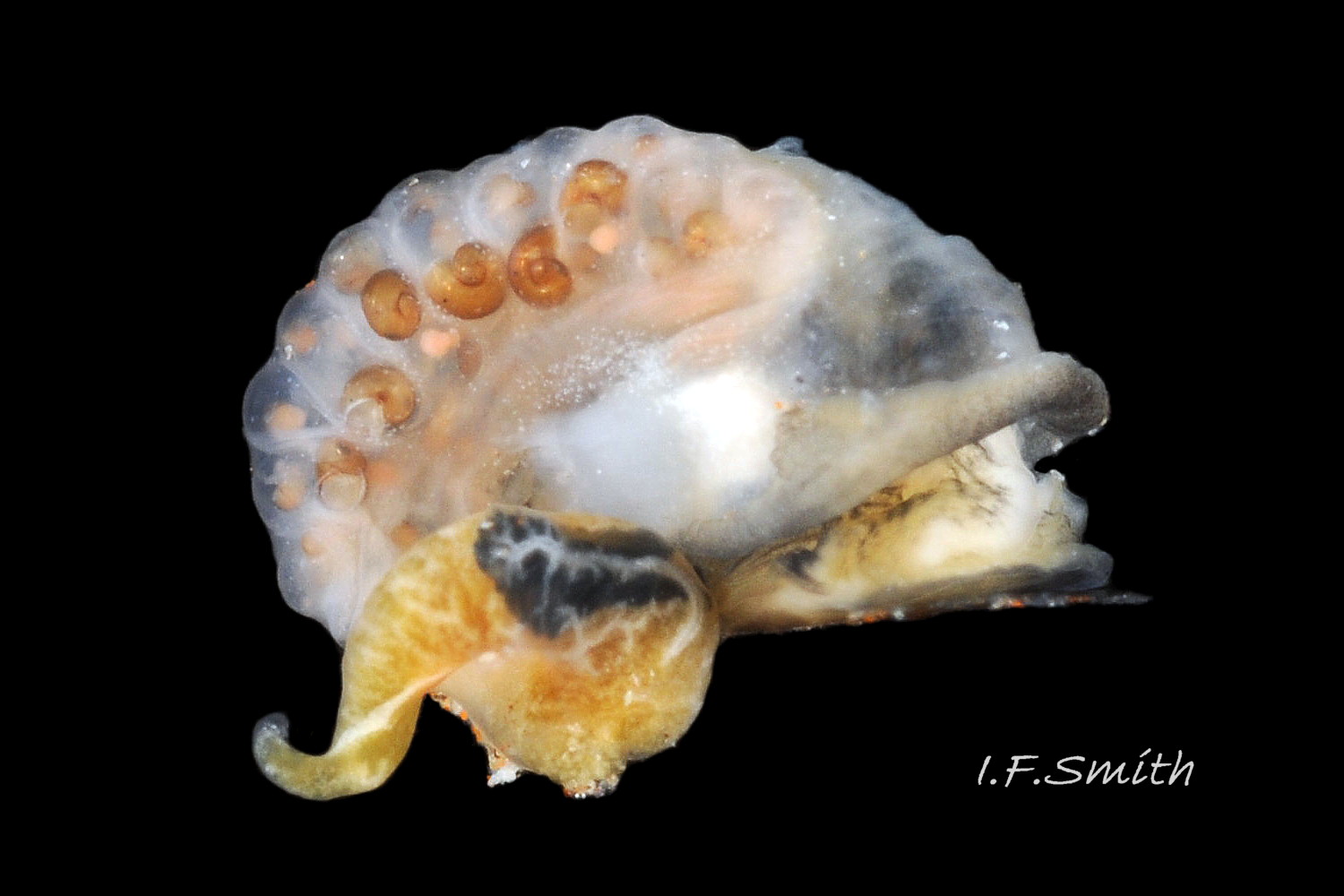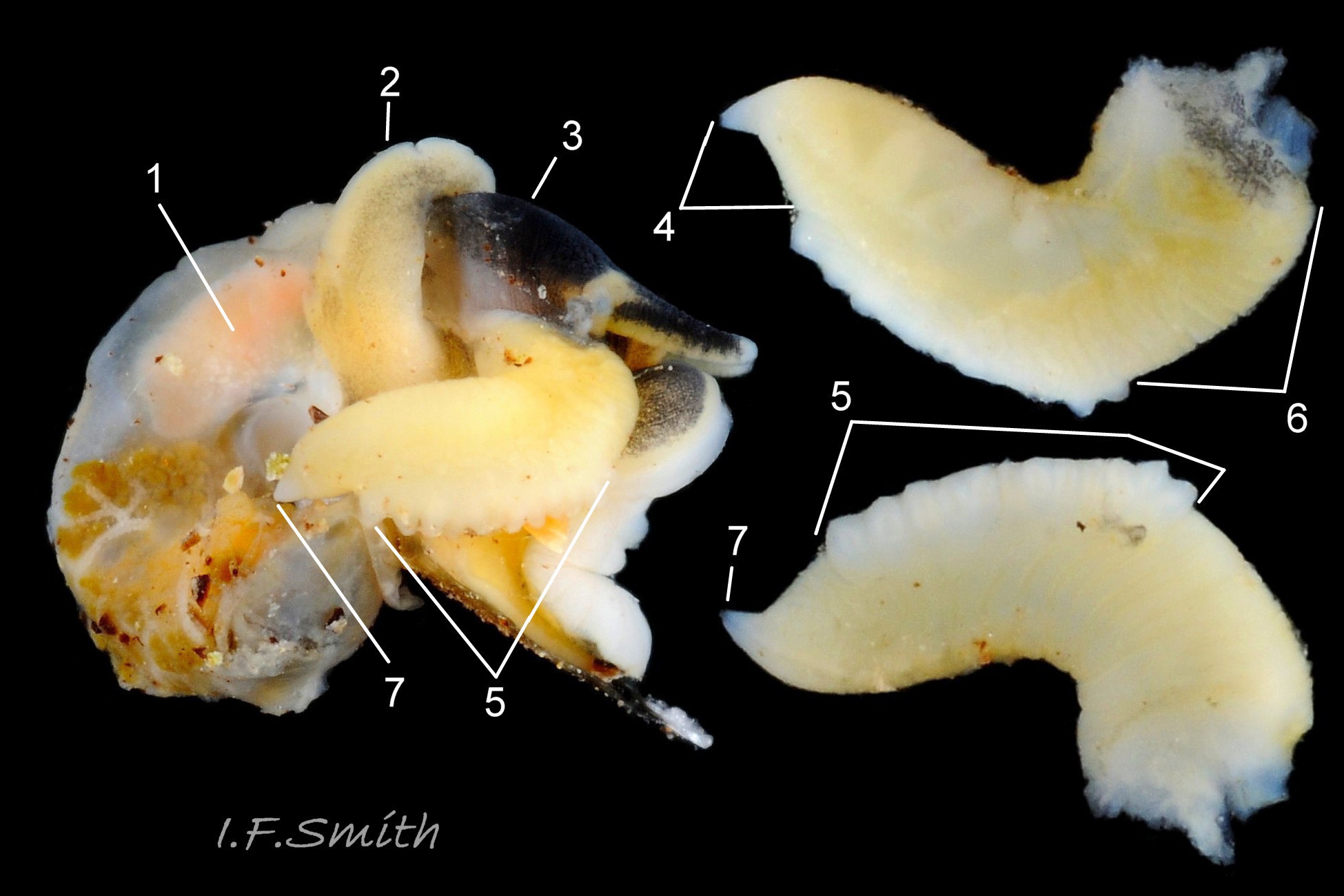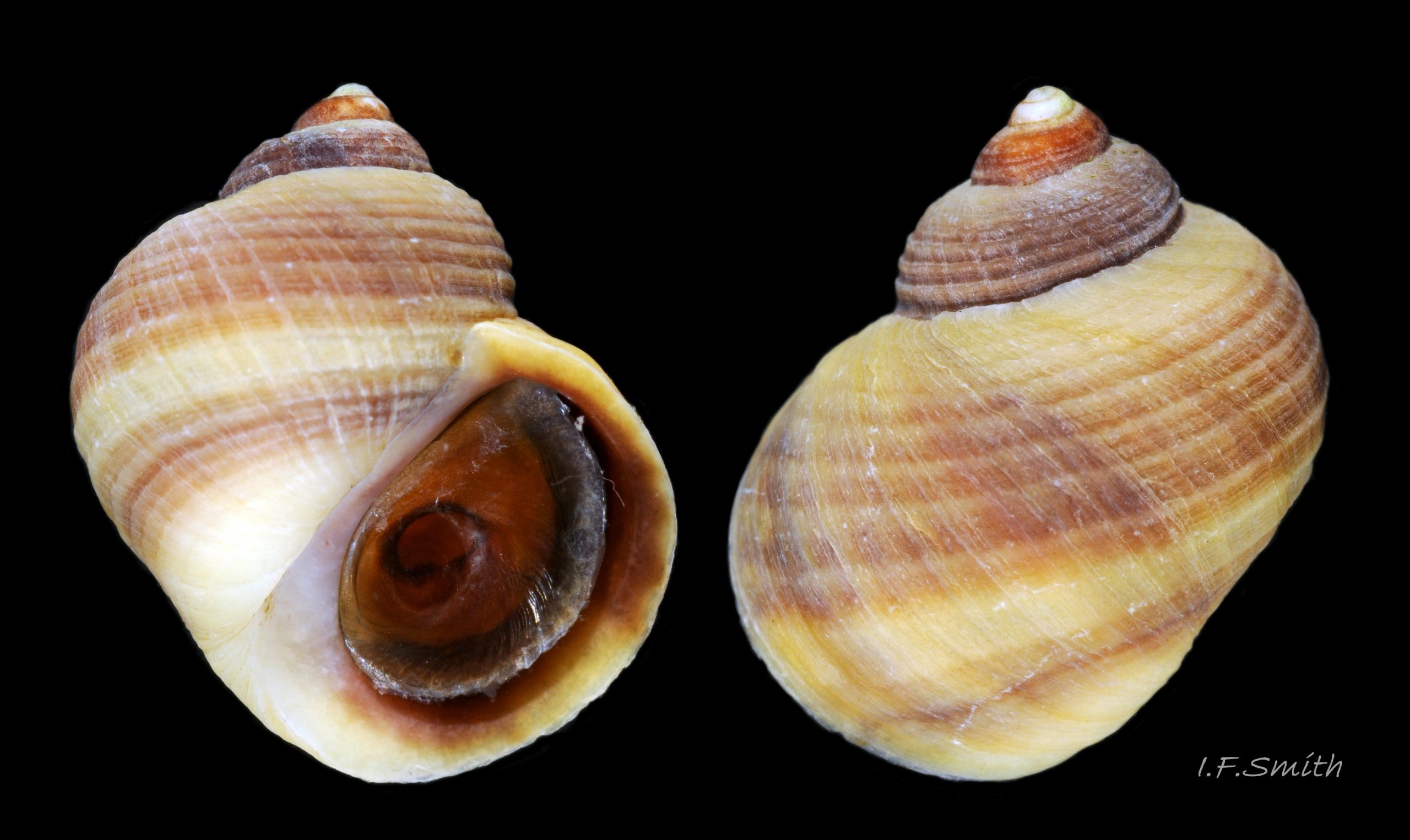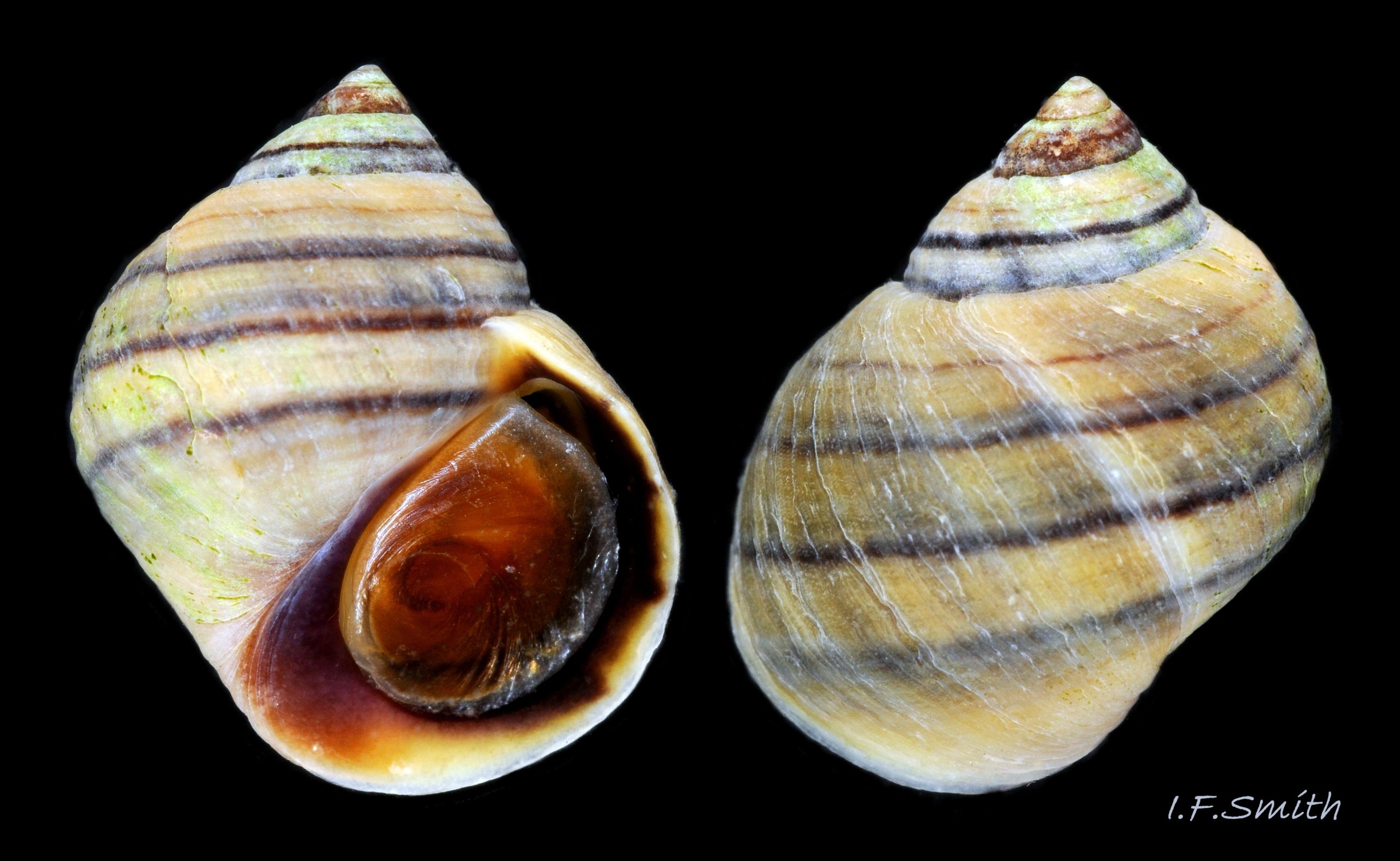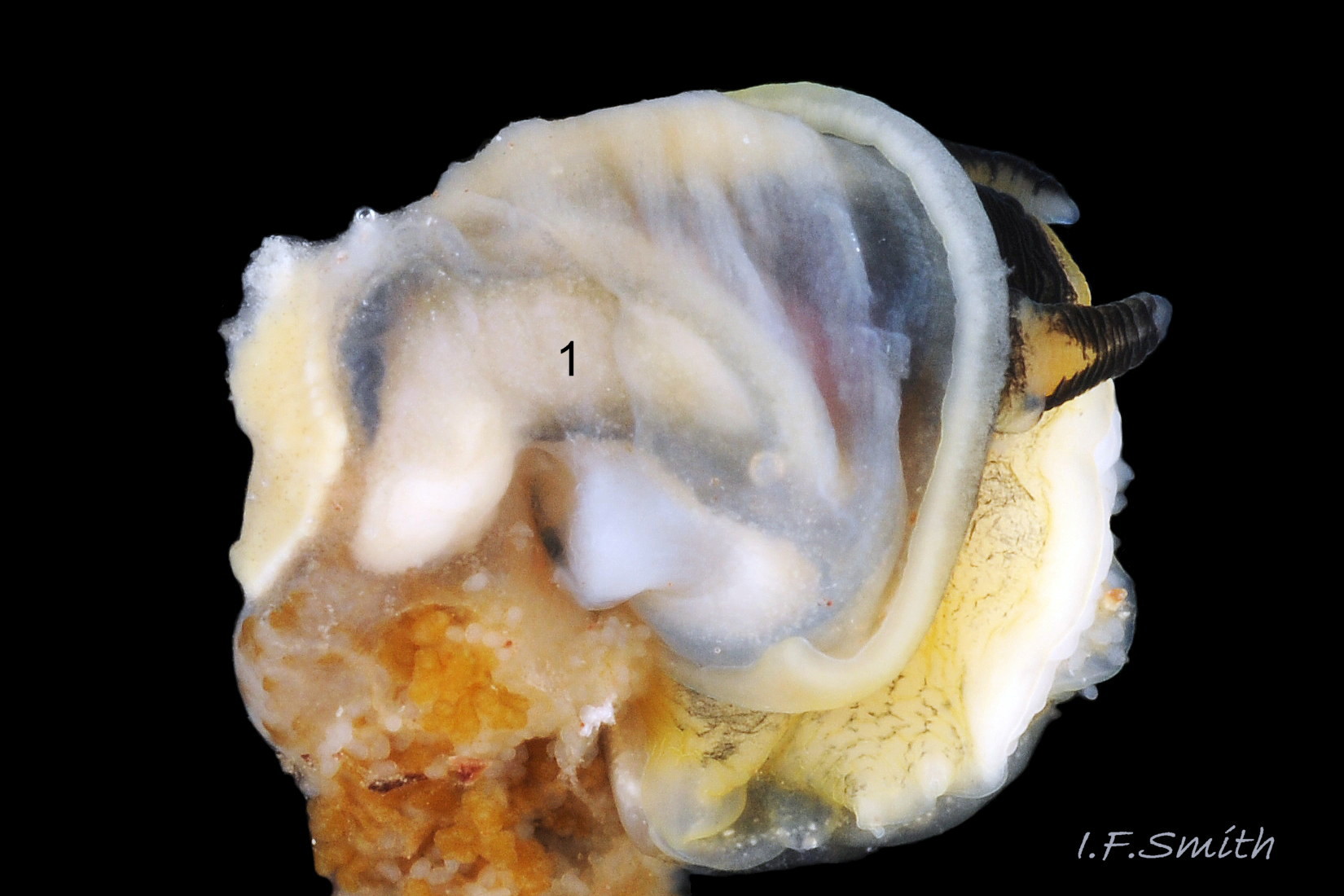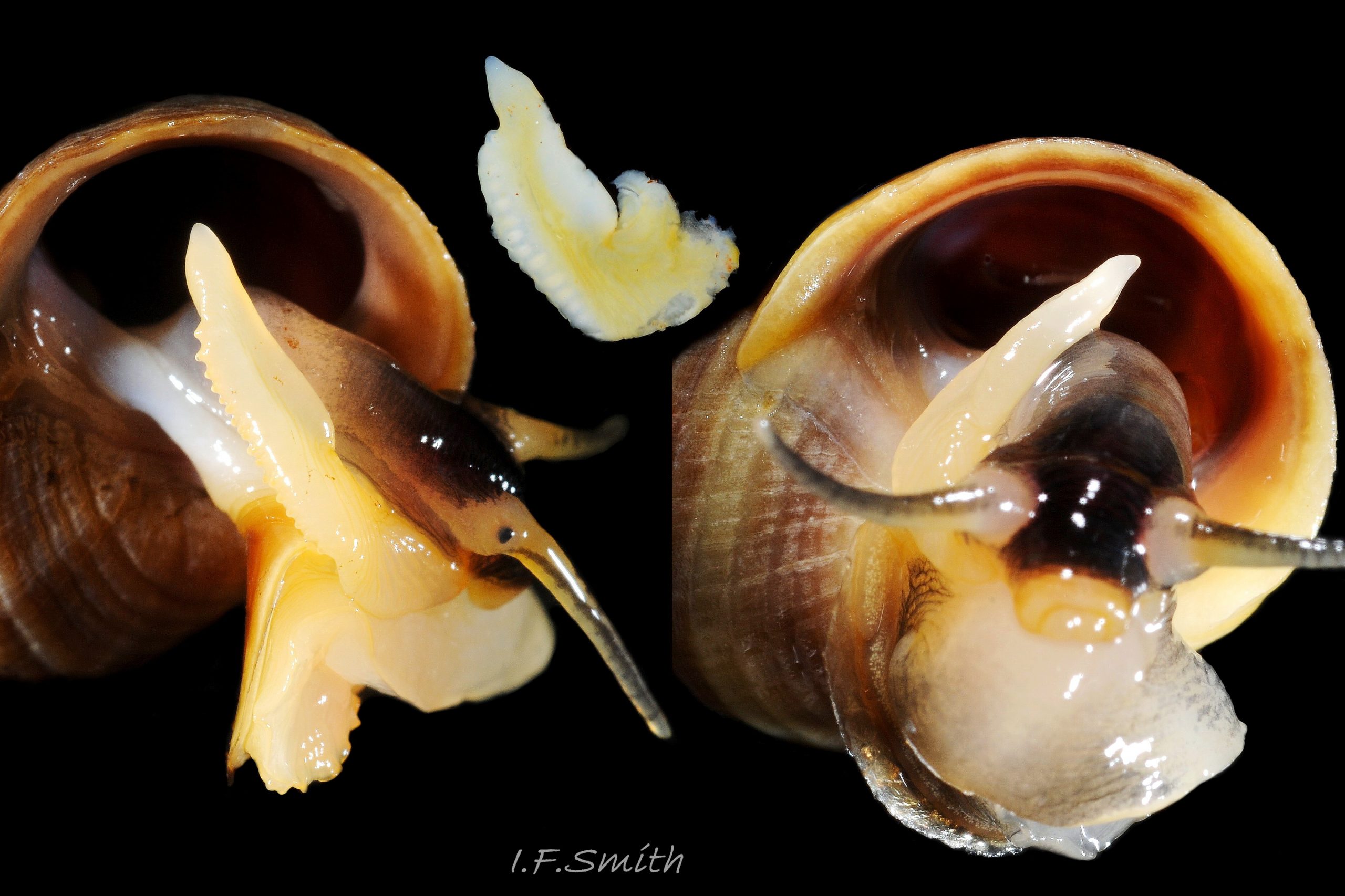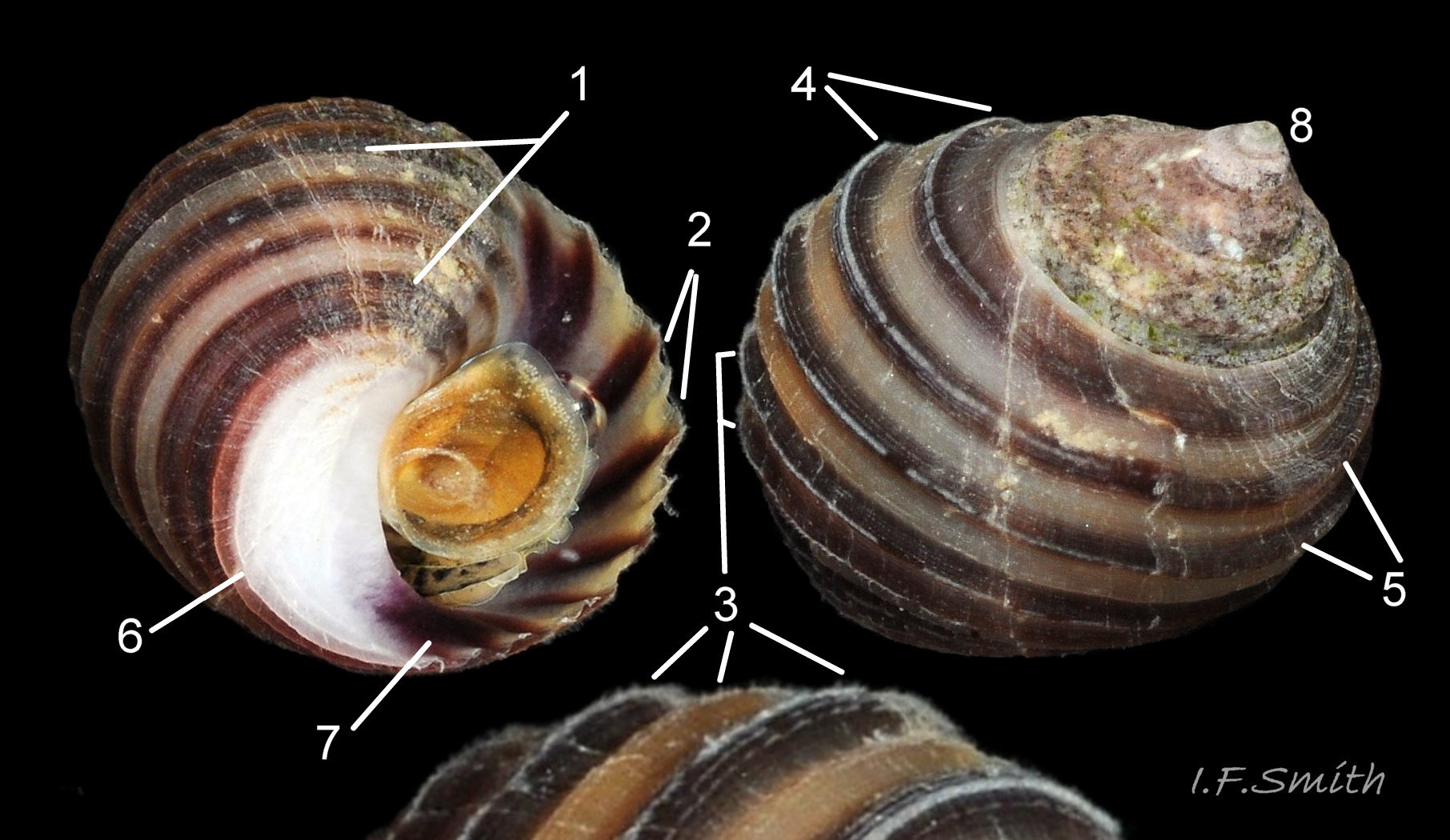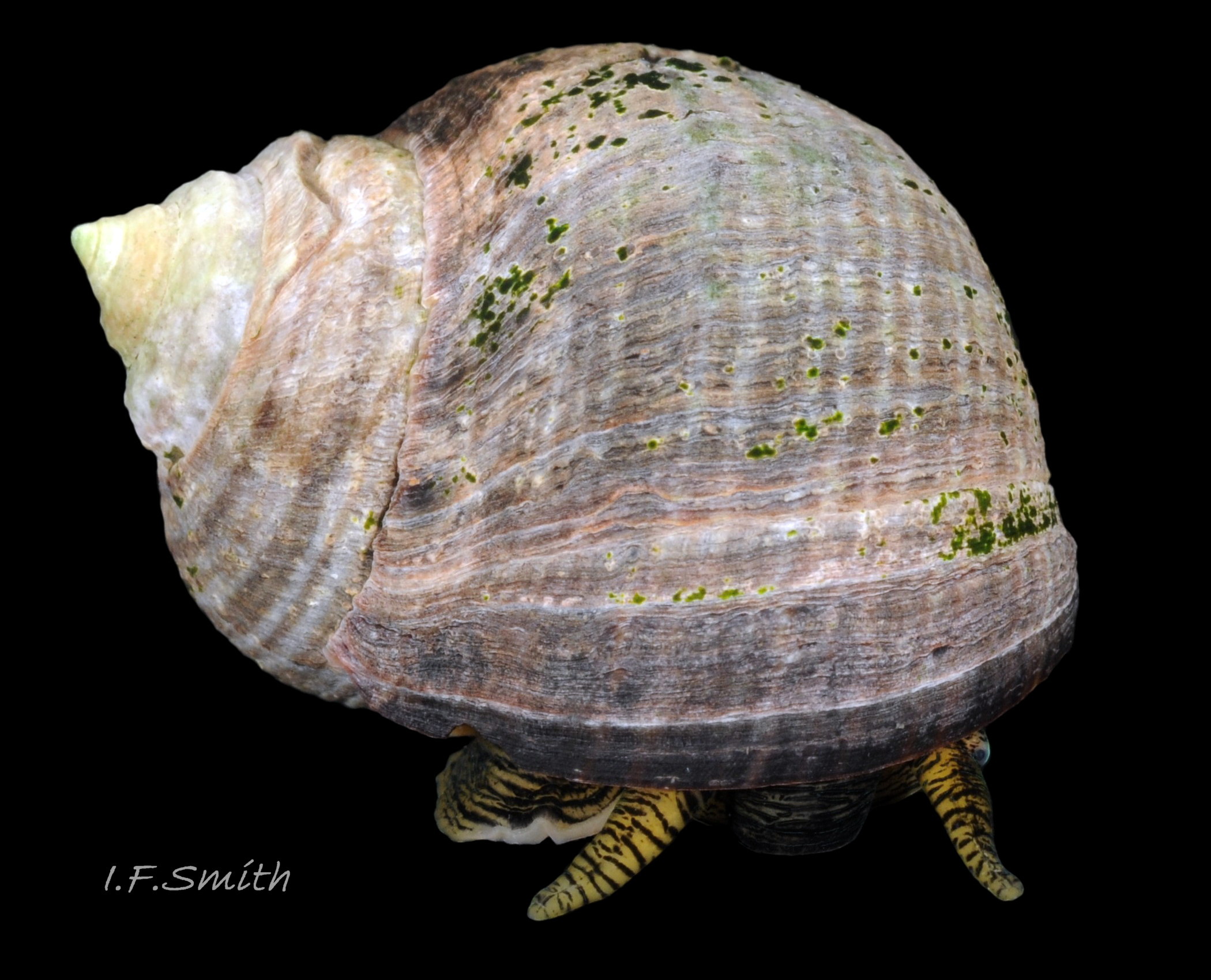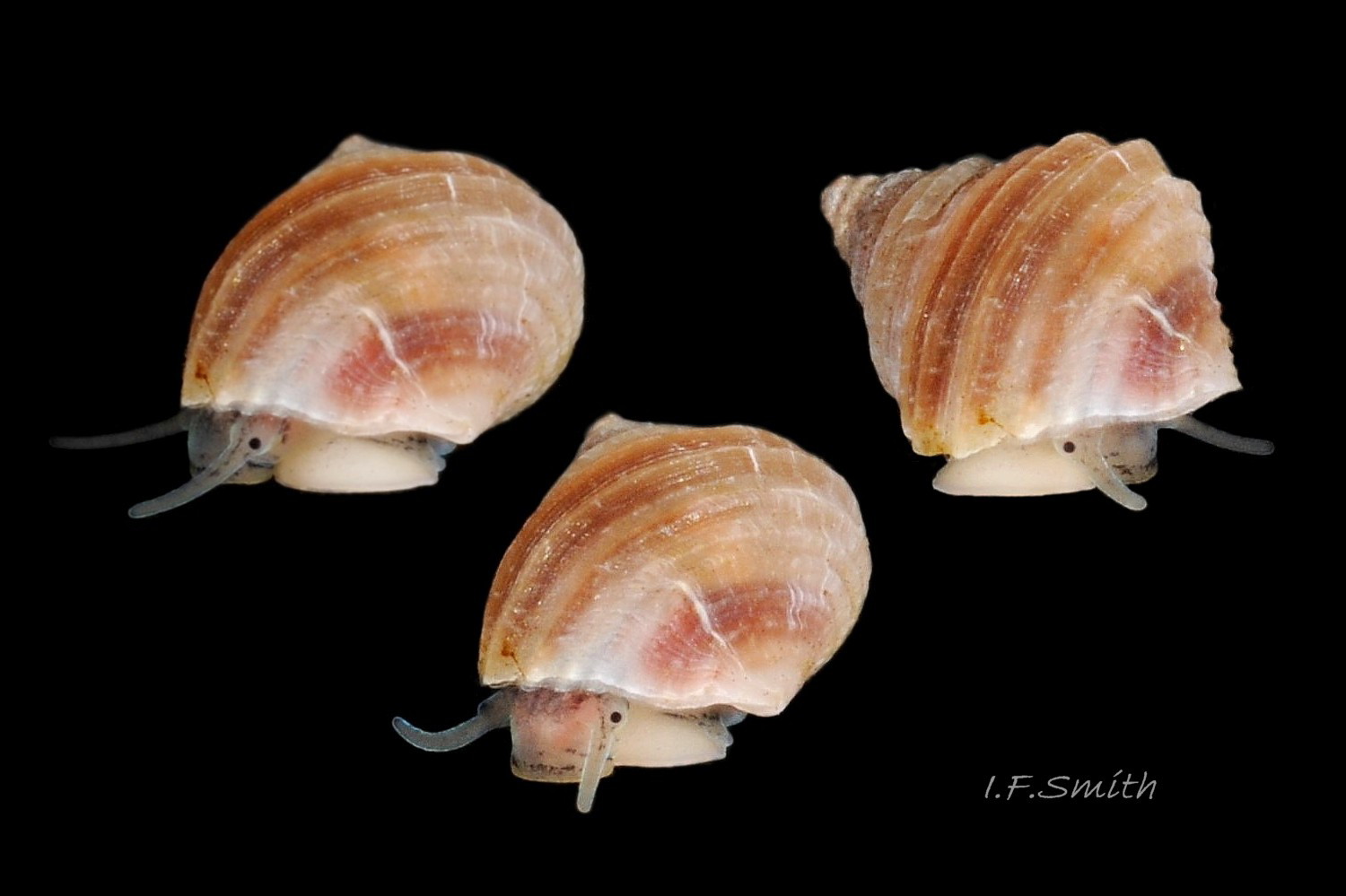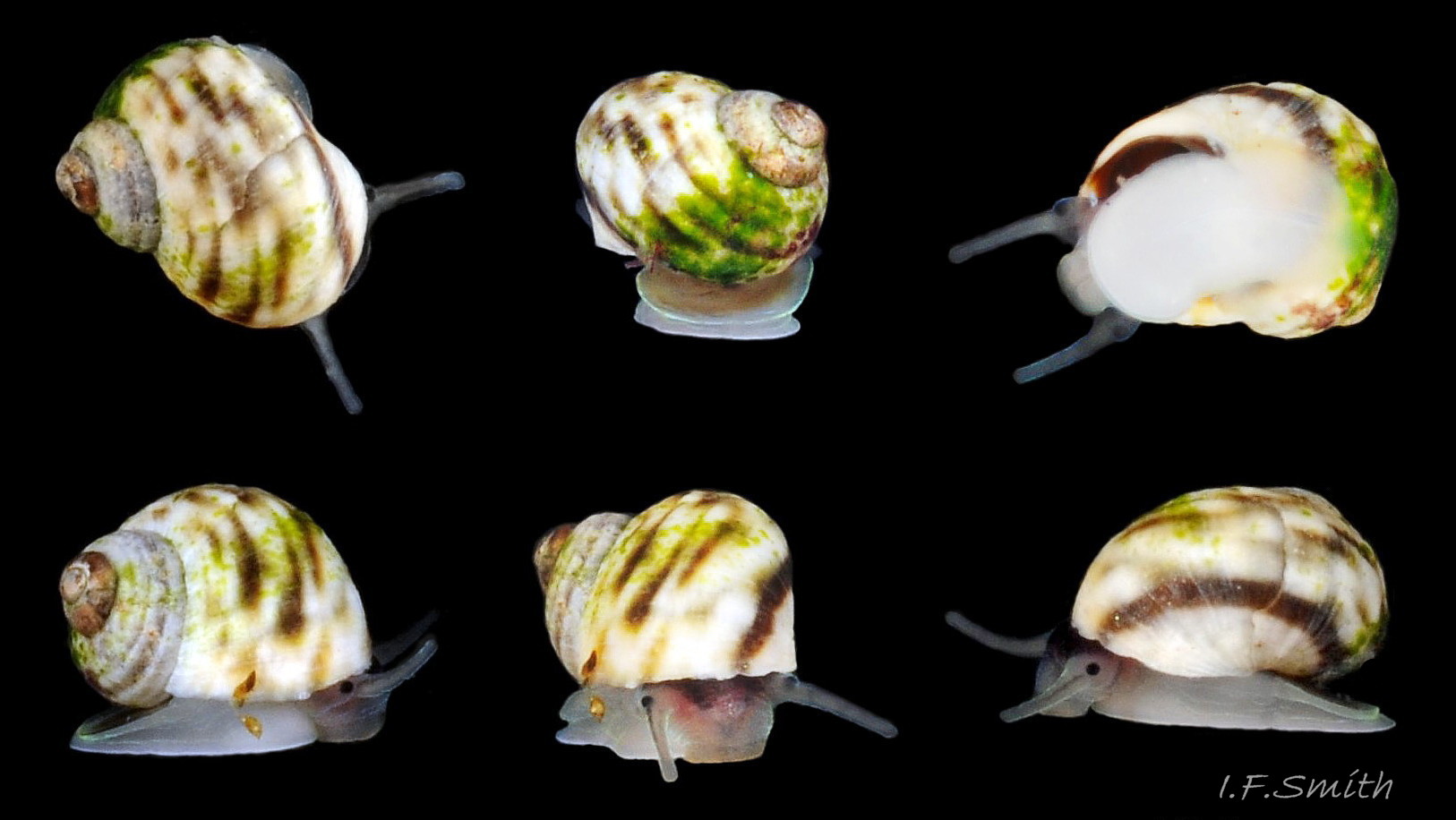Click image to enlarge with full caption. Main text below slider.
Littorina compressa Jeffreys, 1865
Synonyms:
Littorina nigrolineata Philippi, 1846, and most other authors until 1995 (not Littorina nigrolineata Gray, 1839 = banded var. of L. saxatilis sensu stricto); Littorina rudis var. nigrolineata Forbes & Hanley, 1850 (not Gray); Littorina rudis var. sulcata Jeffreys, 1865; Littorina rudis var. compressa Jeffreys, 1865; Littorina saxatilis nigrolineata McMillan, 1939 & 1944 (not Gray, 1839).
See Reid (1996) for more complete synonymy and his reasons why the long established name, Littorina nigrolineata Gray, 1839, should not be applied to L. compressa.
Current taxonomy: World Register of Marine Species (WoRMS) http://www.marinespecies.org/aphia.php?p=taxdetails&id=140260
Vernacular: Black-lined periwinkle (confusing name as L. saxatilis s.s. and L. arcana have black-lined forms, and many L. compressa lack black lines).
GLOSSARY BELOW
Introduction
This is the easiest species to identify in the Littorina saxatilis s.l. complex in Britain, Ireland and Brittany. The population of var. barentica in northern Norway and the Murman coast of Arctic Russia has a different appearance and is not included in this account; description can be found in Reid (1996). Some Littorina specimens in Iberia resemble L. compressa in some respects , but all are considered by Reid (1996) to be L. saxatilis
; they too are excluded from this account, except for purpose of comparison.
Shell Description
Mature shell height 3.6 mm to 23 mm, many don’t mature until over 6 mm. Adults often have thick shell-wall 01 Littorina compressa; juvenile shells are usually thin 02 Littorina compressa. Outer layer calcite, inner layers aragonite. Moderately high spire with pointed apex; bodywhorl 75% to 90% of shell-height. Rounded whorls; separated by sutures that are not deeply recessed. No umbilicus. Aperture oval, of varying roundness, sometimes a slight basal spout, especially on juveniles 02 Littorina compressa Adapical angle almost 90º 01 Littorina compressa. Outer lip slightly crenulated by grooves on outer surface, more markedly on thin walled specimens 02 Littorina compressa. Columellar lip wide. Substantial glaze on body-whorl forms parietal lip. When shell-walls thick, interior of aperture usually paler; narrows rapidly inwards to brown throat. Sculpture usually of broad, flat-topped or gently-curved, strap-like, spiral ribs separated by narrow, deeply incised grooves 03 Littorina compressa. Ribs bear spiral microstriae and often a medial, shallow, secondary groove 04 Littorina compressa. Actively growing juveniles to about 6 mm high often have spiral bands slightly more angulated than on adults 02 Littorina compressa, somewhat resembling other species in L. saxatilis complex 05 Littorina compressa. Ground colour yellow 03 Littorina compressa, or white 06 Littorina compressa shading through cream to pale yellow 07 Littorina compressa, occasionally grey, blackish, or reddish 08 Littorina compressa, . On some shores, 100% have dark-brown 03 Littorina compressa, black 07 Littorina compressa. or purple-black spiral lines, nearly always confined to grooves between the ribs (= nigrolineate, var. sulcata, Jeffreys). The palatal lip, if thick, may have round, dark marks at the ends of the grooves 01 Littorina compressa. Other shores have 100% with no dark lines (= var. compressa, Jeffreys). It seems that few shores have a mixture with intergrading of the two forms 07 Littorina compressa. On rare individuals, dark pigment spreads beyond grooves and grades into the ground colour to form broad bands 09 Littorina compressa. The columellar lip is usually pure white untinted by any other colour 09 Littorina compressa & 10 Littorina compressa. The barnacle ecotype has bands (R. Key) flic.kr/p/bCHKxW or tessellation and is so similar to the barnacle ecotypes of L. saxatilis and L. arcana that examination of genitalia is needed to differentiate them 45 Littorina compressa . Colours and features such as glaze of parietal lip may be obscured by epibiota or detritus 09 Littorina compressa. Periostracum imperceptible. Operculum ovoid spiral, variable shades of translucent brown, sometimes with a fine black speckling 11 Littorina compressa.
Body Description
Head black or grey dorsally 12 Littorina compressa; snout is unpigmented whitish or yellowish at its tip and ventrally 13 Littorina compressa. Large reddish buccal mass shows laterally through pale area to posterior of eyes 13 Littorina compressa and through dorsum of head if pigmentation is not intense 14 Littorina compressa; pinkish odontophore with radula visible in open mouth when feeding 15 Littorina compressa. Cephalic tentacles taper rapidly from greatly swollen base bearing eye 15 Littorina compressa; translucent yellowish-white with pair of blackish dorsolateral lines 12 Littorina compressa Black dorsolateral lines on tentacles may expand laterally along wrinkles to form short traverse lines 17 Littorina compressa, sometimes dorsolateral lines so expanded that tentacles are almost entirely blackish 18 Littorina compressa . Body translucency varies with presence/intensity of black pigment behind head. Course of anterior aorta visible as long unpigmented band running diagonally across body to base of right tentacle 12 Littorina compressa & 14 Littorina compressa. b>Radula much longer than body; accommodated in spiral radula sac that may be visible as whitish circle with pink centre in dorsum of body 14 Littorina compressa . Mantle translucent yellowish or whitish near rim of aperture 18 Littorina compressa but pigmented dark grey or black further in where it forms the mantle cavity 19 Littorina compressa. Greyish ctenidium within dark mantle cavity 20 Littorina compressa.
Typically 3 to 8 large mamilliform glands (extremes 1 to 13) in a single row along ventral edge of penis (Reid, 1996) and (Naylor & Begon, 1982) 21 Littorina compressa. Base of penis wrinkled. Filament of penis triangular, sometimes somewhat mucronate 18 Littorina compressa less than 5% of total length of penis. Distal and proximal faces of penis often entirely translucent yellowish white apart from opaque white subepithelial tissue in glands and around sperm groove distally 21 Littorina compressa. Often distal face of penis has some grey or black pigment 13 Littorina compressa, occasionally covering basal half 22 Littorina compressa. Some males have reduced penis size, possibly indicating out of breeding condition. Appearance of penis is affected by killing 21 Littorina compressa. Ovipositor on right side of female’s body extends to below right eye; grey with longitudinal dark creases 23 Littorina compressa and sometimes a yellow tip 16 Littorina compressa. Sole of foot pure white, medial line divides into left and right halves; many transverse waves 24 Littorina compressa. Upper surface of foot white 12 Littorina compressa, often with black or grey lines and speckles 25 Littorina compressa & 26 Littorina compressa or unpigmented yellowish-white 27 Littorina compressa. Opercular disc does not enfold edges of operculum and shifts position, sometimes extending a little beyond operculum 28 Littorina compressa and sometimes retracting to expose a little of the underside of the operculum 29 Littorina compressa. Disc is whitish 30 Littorina compressa, sometimes with a yellowish perimeter 31 Littorina compressa that shows through the translucent operculum 11 Littorina compressa. Brown operculum is lighter colour where about a third of it is attached to the opercular disc 11 Littorina compressa.
Internal anatomy
If a live animal is induced to extend from its shell with the methods described in Smith (2016) (link in references) it should be possible to see the mantle cavity, head, tentacles, penis or ovipositor, foot, and, if its body is not too heavily pigmented, the buccal mass, radular sac, and course of the anterior aorta 14 Littorina compressa.
If a specimen is killed and extracted from its shell (methods in section 4 of Smith, 2017), it should be possible, without further dissection to discern the mantle, osphradium, columellar muscle, posterior oesophagus, stomach and digestive gland 19 Littorina compressa.
If the mantle is cut along its left side and folded back, further anatomical detail will be exposed, including a ribbed “ciliated field” 32 Littorina compressa that was used for differentiation of Littorina species by Hannaford Ellis (1979). However, it is not an easy feature to examine, is considered unreliable (D. Reid, in litt.) and is not necessary for L. compressa specimens as they can be easily distinguished by their shells (Ellis, 1979).
If the body is cut open, the radula can be extracted. Its length varies from 110% to 277% of shell height (Reid, 1996). It is generally shorter than that of L. saxatilis
and L. arcana, but there is large interspecies overlap and seasonal variation as the radula continues growth when wear from feeding ceases in winter.
Key identification features
Littorina compressa has most distinct shell of any species in Littorina saxatilis s.l. complex and can be reliably identified by its sculpture when over 6 mm high (apart from in N. Norway to Murman Coast, not included below).
Littorina compressa
1*: Shell has broad, flat topped or gently curved, straplike, spiral ribs with narrow, deeply incised grooves . 01 Littorina compressa. Often a shallow, medial, secondary groove on the ribs 04 Littorina compressa .
2: Ground colour of shell usually yellow, often white, occasionally reddish. Dark spiral lines present on some shores, absent on others 07 Littorina compressa.
3: Spiral, dark lines, when present, are almost entirely confined to the grooves 01 Littorina compressa. N.B. black lines alone are not diagnostic; there are also nigrolineate forms of L. saxatilis and L. arcana, occasionally with the lines in the grooves .
4: Columellar lip, including its base, white 09 Littorina compressa & 10 Littorina compressa. Other lips white, or showing colour and bands of exterior when lip thin.
5: Removal of shell from mature female reveals, through translucent mantle, an oviduct that never has shelled embryos.
6: Penis has 3 to 8 large mamilliform glands (extremes 1 to 13) in a single row along ventral edge 21 Littorina compressa. Filament (glandless tip) triangular, sometimes somewhat mucronate 18 Littorina compressa, less than 5% of total length of penis.
7: Sheltered and wave exposed shores in Britain. Not on saltings.
Similar species
Littorina saxatilis (Olivi, 1792) black lined forms.
1: When present, tops of spiral ribs not flattened. Ribs usually narrow, often with raised keel or edge. Intervening furrows, of varying width, not usually narrowly incised. 34 Littorina compressa.
2: Ground colour of shell varies; white, yellow 05 Littorina compressa, brown, grey, reddish
3: Black or dark brown spiral lines, when present, not usually confined to grooves 35 Littorina compressa, but in the grooves occasionally in Britain and frequently in Spain 34 Littorina compressa.
4: Interior of lips very often tinted brownish, yellowish, pinkish or other colour, columella lip rarely pure white 35 Littorina compressa.
5: Removal of shell from adult female reveals prominent brood pouch containing shelled embryos 36 Littorina compressa. N.B. thin lipped juvenile female L. saxatilis s.s may have vacant oviduct.
6: Penis on unsedated live males usually has mucronate tip on broad rounded distal end. 37 Littorina compressa. But not all L. saxatilis penes have a mucronate tip, and sometimes L. compressa has a similar tip.
7: On virtually all British shores with hard substrate near high water mark, also on saltings.
Littorina arcana Hannaford Ellis, 1978 dark lined forms.
1: When present, ribs usually have sloping surface with raised keel or edge 05 Littorina compressa. Intervening furrows wide; not narrowly incised. 38 Littorina compressa.
2: Ground colour of shell varies; white, yellow, brown, grey, reddish.
3: Dark spiral lines, when present, sometimes confined to grooves 05 Littorina compressa, and can occur on smooth shells 39 Littorina compressa.
4: Interior of lips whitish, very often tinted brownish, yellowish, pinkish or other colour.
5: Removal of shell from mature female reveals through translucent mantle an oviduct that never contains shelled embryos. 40 Littorina compressa
6: Penis on unsedated live males lacks mucronate tip on its steadily tapering filament (glandless tip). 41 Littorina compressa
7: Moderately exposed to very exposed shores. Not on saltings.
Juvenile Littorina littorea Linnaeus, 1758 to about 9 mm high.
1: Sharp narrow spiral ribs, adapical edge (towards apex) is steeper. 42 Littorina compressa.
2: Ground colour light brown to blackish brown, darkening with growth. Dark spiral lines frequent on ribs, not usually in grooves 42 Littorina compressa.
4: Columellar lip white with vitreous lustre untinted by other colour. Outer lip thin and usually scalloped and banded brown/white; basal flare brown 42 Littorina compressa.
7: Usually lower on shore than species in L. saxatilis s.l. complex, but some overlap, especially with L. compressa.
8: Transverse lines on adult tentacles 43 Littorina compressa. and anterior of body are fragmentary on very small juveniles 44 Littorina compress, but no longitudinal dorsolateral lines on tentacles.
Habits and ecology
Lives on bedrock and boulders on upper shore in barnacle zone of exposed shores, and in Fucus spiralis zone and upper part of Fucus vesiculosus / Ascophyllum zone of more sheltered shores; usually lower on shore than L. saxatilis s.s. a
nd L. arcana with some overlap 33 Littorina compressa. Not often on algal fronds. Three ecotypes recognised: “moderate” from sheltered to moderately exposed shores, “wave exposed” from exposed shores, and “barnacle” living among barnacles and mussels on exposed shores (Reid, 1996).
Moderate ecotype populations on shores with Ballantine exposure grades 5 to 8, where crabs are common, usually grow larger (mature shells about 14 mm on average, up to 20 or 23 mm), have longer spires that allow retreat from crab attack, and thicker shells and narrower apertures to resist crab intrusion. Wave exposed ecotype populations on shores with Ballantine grades 1 to 4 are smaller (up to 12 mm high) and usually have populations with shorter spires, and thinner shells and wider apertures to accommodate larger feet for firmer grip. However, those on unstable boulders on exposed shores, with risk of boulder- crushing, have larger, thicker shells (mature at about 13 mm height) than those living in crevices of stable bedrock (mature at about 8 mm) on the same exposed shore (Naylor & Begon, 1982) 33 Littorina compressa & 01 Littorina compressa. The barnacle ecotype matures as small as 3.6 mm high, max. height 6 mm and, as it lives on exposed shores, has short spire, thin shell and relatively large aperture too 45 Littorina compressa .
Of fifteen shores surveyed in Anglesey, nine mainly exposed shores had 100% lined shells, five mainly sheltered shores had 100% unlined shells, and only one (sheltered) shore had a mixture with some intergrading (Naylor & Begon, 1982). Population densities usually lower than of L. saxatilis s.s. and L. arcana; occasionally 5 – 30 per m² on favourable shores in Wales and Ireland, but up to 2000 per m² recorded in Brittany. Absent from saltings, but able to survive there in experiments; may need hard rock to attach spawn to. Sometimes at mouths of estuaries.
Locomotion by ditaxic retrograde waves on longitudinally divided sole. Bilaminate anterior edge contains anterior pedal gland that produces mucus for locomotion. No planktonic stage; dispersal by crawling; consequent low gene exchange contributes to maintenance of discrete populations of nigrolineate or plain shell forms on different shores.
Feeds on fucoid fronds where present, otherwise on algal sporelings, small epiphytic algae, unicellular algae and fragmented organic debris. Faeces expelled as pellets 26 Littorina compressa. Predators include crabs that especially consume larger specimens on sheltered shores where Carcina maenas Linnaeus is common. Rock pippets (Anthus spinoletta, Montagu) consume many juveniles, and probably have good colour vision that exerts selection pressure on less cryptic specimens. Shell outline is disrupted by black lines so nigrolineate form is well camouflaged on bare or barnacle-covered rocks. L. compressa is host to the larval forms of the parasitic trematode worms Microphallus pygmaeus Levinsen and M. similis Jägerskiold which have A. spinoletta and C. maenas, respectively, as their subsequent host.
Breeding reported all year with peak in N. Wales May to June, or winter to spring; probably varies geographically and with local weather conditions. Males inseminate females by inserting penis into mantle cavity; seem unable to distinguish females of own species from those of L. saxatilis s.s. as about 50% of observed copulation (or attempted copulation; release of spermatozoa could not be ascertained) by male L. compressa on an Anglesey shore was with female L. saxatilis s.s. or males of either species (Raffaelli, 1997). Females are oviparous; spawn mass is gelatinous, pink or white, reniform to circular, about 5 mm X 10 mm X 3 mm thick and contains 100 – 200 singly encapsulated ova. Spawn attached to rocky substrate in humid position e.g. under rock, crevice among barnacles or at base of Fucus. Veliger stage passed within egg; crawling, shelled young emerge. Juveniles under 7 mm high usually have sloping ribs with a sharp raised edge, resembling other species in L. saxatilis complex.
Distribution and status
L. compressa var. typica Britain, Ireland, Normandy and Brittany. Absent from continental coast of North Sea apart from occasional individuals with imported oysters. Records of L. nigrolineata from Spain (Rolán, 1984) and Portugal (Burnay, 1986) are based on the Iberian black-lined form of L. saxatilis; L. compressa is absent (Reid, 1996) GBIF map www.gbif.org/species/4361986
Absent from N.E. Irish Sea, and E. England from R. Tyne to Sussex. Greatest concentrations are in W. Cornwall, S.W. & N.W. Wales, S. & W. Wales, W. Scotland and Orkney. Small barnacle-ecotype recorded only in S.W. Wales and W. Ireland. Some British and Irish records are probably mistaken identifications of lined forms of L. saxatilis s.s.. NBN U.K. interactive distribution map of “L. nigrolineata Gray” is probably mainly of L. compressa, but Reid (1996) expressed doubt about and omitted south coast England records east of Cornwall from his distribution map; validation with specimens or clear photographs desirable NBN Map species.nbnatlas.org/species/NHMSYS0021055459
The rare L. compressa var. barentica is found from northern Norway (Narvik) to Murman coast of Arctic Russia; its shell is usually entirely brown, thin-walled, tall-spired and lacks flat strap-like ribs. Fuller details in Reid (1996). No single convincing ecological reason has been advanced for the patchy distribution. Colonization is probably retarded by the lack of planktonic dispersal as the young pass the veliger stage in the egg.
Acknowledgements
I gratefully acknowledge the help of Brian Goodwin, Jan light, Alexandra Richter and Peter Seaward in the making of this account and I thank Joss Carr and Tabitha Pearman for use of their images.
Links and references
Ballantine, W.J. 1961. A biologically-defined exposure scale for comparative description of rocky shores. Field studies 1(3): 1-19. https://cdn.fieldstudiescouncil.net/fsj/vol1.3_17.pdf
Deyglun C. 1955. Biologie comparee de deux sous-espèces de Littorina saxatilis Travail présenté pour l’obtention du Diploma d’Etudes, Faculté des Sciences de l’Universitè de Paris.
Forbes, E. & Hanley S. 1853a. A history of the British mollusca and their shells. vol. 3, London, van Voorst. archive.org/stream/historyofbritish03forb#page/32/mode/2up
Forbes, E. & Hanley S. 1853b A history of the British mollusca and their shells. vol. 4, London, van Voorst. Plate 83 figs. 1 & 2.
archive.org/stream/historyofbritish04forb#page/n645/mode/2up
Fretter, V. and Graham, A. 1962. British prosobranch molluscs. London, Ray Society.
Fretter, V. and Graham, A. 1994. British prosobranch molluscs. Revised and updated edition. London, Ray Society.
Graham, A. 1988. Prosobranch and pyramidellid gastropods. London, Linnean Society of London.
Gray, G.E. 1839. The zoology of Captain Beechey’s voyage. Molluscous animals and their shells. London, Bohn.
Hannaford-Ellis, C. J. 1979. Morphology of the oviparous Rough winkle, Littorina arcana Hannaford Ellis, 1978, with notes on the taxonomy of the L. saxatilis species –complex (Prosobranchia: Littorinidae). Journal of Conchology 30: 43– 56, and four pp. of plates (unpaginated).
Hayward, P.J. & Ryland, J.S. 1995. Handbook of the marine fauna of north-west Europe. Oxford, Oxford University Press.
Jeffreys, J.G. 1865. British conchology. vol.3. London, van Voorst. (As Littorina rudis var. sulcata and Littorina rudis var. compressa) . archive.org/stream/britishconcholog03jeffr#page/364/mode/2up .
McMillan, N.F. 1939. Littorina saxatilis nigrolineata Gray. J. Conch., Lond. 21: 173- 174.
McMillan, N.F. 1944. Notes on Littorina saxatilis (Olivi). J. Conch., Lond. 22: 100- 103.
Naylor, R. & Begon, M. 1982. Variation within and between populations of Littorina nigrolineata Gray on Holy Island, Anglesey. J. Conch., Lond. 31: 17- 30.
Philippi Abbildungen und Beschreibungen neuer oder wenig gekannter Conchylien
Raffaelli, D.G. 1977. Observations on the copulatory behaviour of Littorina rudis (Maton) and Littorina nigrolineata Gray. Veliger 20: 75- 77. biostor.org/reference/129156
Reid, D.G. 1996. Systematics and evolution of Littorina. London, Ray Society.
Seshappa G. 1947. Oviparity in Littorina saxatilis (olivi). Nature London 160: 335 – 336https://www.nature.com/articles/160335b0
Smith, I.F. 2012. Anatomy of marine gastropods without dissection. Mollusc World 28: 13 to 15. Conch. Soc. GB & Ireland.
Smith, I.F. 2016. Revision of Smith, I.F. 2012. Anatomy of marine gastropods without dissection. flic.kr/s/aHskNP6GoL and pdf version at www.researchgate.net/publication/310467378_Anatomy_of_mar…
Smith, I.F. 2017. Differentiating Littorina obtusata sensu stricto (Linnaeus, 1758) from Littorina fabalis (Turton, 1825). flic.kr/s/aHskPGCpTE
Glossary
adapical = towards the apex of the shell.
adapical angle = angle at which outer lip of aperture meets body-whorl.
anterior aorta = main artery taking blood from heart to head and anterior of body. a.k.a. cephalic aorta.
aperture = mouth of gastropod shell; outlet for head and foot.
apical = at the apex.
aragonite = orthorhombic crystalline mineral-form of calcium carbonate. Less common on land than calcite, but, currently, the more frequent mineral-form in oceans and living mollusc shells.
buccal mass = anterior of digestive system containing odontophore that supports anterior of radula.
calcite = trigonal crystalline mineral-form of calcium carbonate. More common on land than aragonite, but, currently, the less frequent mineral-form in oceans and living mollusc shells. More resistant than aragonite to acid rain corrosion; forms outer shell layer of shore-dwelling Littorina species in cool climates. (Corrosion of calcium carbonate faster at cold temperatures).
cephalic = (adj.) of or on the head.
cilia = (pl.) motile linear extensions of membrane used in locomotion, or to create water currents in feeding. (“cilium” singular).
ciliated = (adj.) coated with cilia.
columella = solid or hollow axis around which gastropod shell spirals; hidden inside shell, except next to columellar lip of aperture where hollow ones may end in an umbilicus or siphonal canal.
columellar = (adj.) of or near central axis of spiral gastropod.
columellar lip = lower (abapical) part of inner lip of aperture.
columellar muscle = large muscle connecting foot/head of gastropod to its shell at the columella.
crenate = having a round-toothed or scalloped edge.
ctenidium = comb-like molluscan gill; usually an axis with a row of filaments either side.
ditaxic = (of locomotion waves on foot) double series of waves, out of phase with each other, one series on each side of central furrow on sole.
direct = (of locomotion waves on foot) waves travel from posterior to anterior.
distal = away from centre of body or point of attachment. Distal end of penis is its free tip. Distal face of penis is face held facing away from body when penis untwisted and in its resting position pointing to posterior.
dorsolateral = at or near junction/merging of dorsal and lateral surfaces.
epibiota = organisms living on surface of another organism.
epithelium = tissue forming outer layer of body surface.
epiphytic = (adj.) of plant living on a larger one for support, but not nutrition.
H. = (height of gastropod shells) distance from apex of spire to base of aperture.
interspecific = (adj.) existing or arising between different species.
intraspecific = (adj.) occurring within a single species or involving members of one species.
mamilliform = nipple-shaped.
mantle = sheet of tissue that secretes the shell and forms a cavity for the gill.
mucronate = bluntly rounded end with small terminal point (“mucro”).
myoglobin = red oxygen-binding protein often in buccal-mass muscles of gastropods. Similar to red haemoglobin in vertebrates, but green haemocyanin is usual oxygen-carrier in mollusc blood. https://www.researchgate.net/publication/251227038_Radular_myoglobin_and_protein_variation_within_and_among_some_littorinid_species_Mollusca_Gastropoda
nigrolineate = bearing blackish lines.
odontophore = firm, approximately ellipsoid, structure of cartilage supporting radula. Protruded like a tongue to operate radula. Usually reddish from myoglobin, and medially grooved.
opercular = (adj.) of the operculum.
opercular groove = groove across foot which produces conchiolin for creation of operculum to its posterior; produced faster at right end of groove so resultant ribbon curves to form spiral operculum.
opercular disc = part of foot that growing operculum rotates on.
opercular lobe = extension of opercular disc round edge of part of operculum.
operculum = plate of horny conchiolin, rarely calcareous, used to close shell aperture.
osphradium = organ for testing water quality (chemicals and/or particles) usually near ctenidium.
oviduct = internal tube to carry ova from ovary to the exterior.
oviparous = (adj.) of species which lays egg-capsules in which embryos develop until hatching.
ovipositor = structure used in depositing spawn.
ovoviviparous = (adj) of species in which embryos develop in egg-capsules within female without direct nourishment from her. Active young born after eggs hatch within her.
palatal lip = outer lip of gastropod aperture.
pallial = (adj.) of the mantle.
parietal lip/wall) = upper part of inner side of aperture, often a glaze lacking clear lip structure.
penes = (pl. of penis) male copulatory organ.
periostracum = thin horny layer of proteinaceous material often coating shells.
plankton = animals and plants that drift in pelagic zone (main body of water).
prostate = gland that secretes fluid for sperm.
proximal = towards centre of body or point of attachment. Proximal end of penis is attached to body. Proximal face of penis is held against body when penis untwisted and in its resting position.
radula = ribbon bearing horny teeth; extruded on an odontophore to rasp food.
reniform = kidney shaped.
retrograde = (of locomotion waves on foot) waves travel from anterior to posterior.
salting = area of salt tolerant vascular plants rooted in sediment between MHW and EHWS. [Preferred synonym for “saltmarsh” as much of salting not marshy.]
sensu lato = (abbreviation s.l.) in the wide sense.
sensu stricto = (abb. s.s.) in the strict sense, excluding species which have been confused with it.
subepithelial = within body below epithelium.
suture = groove or line where whorls adjoin.
veliger = shelled larva of marine mollusc which swims by beating cilia of a velum (bilobed flap).
